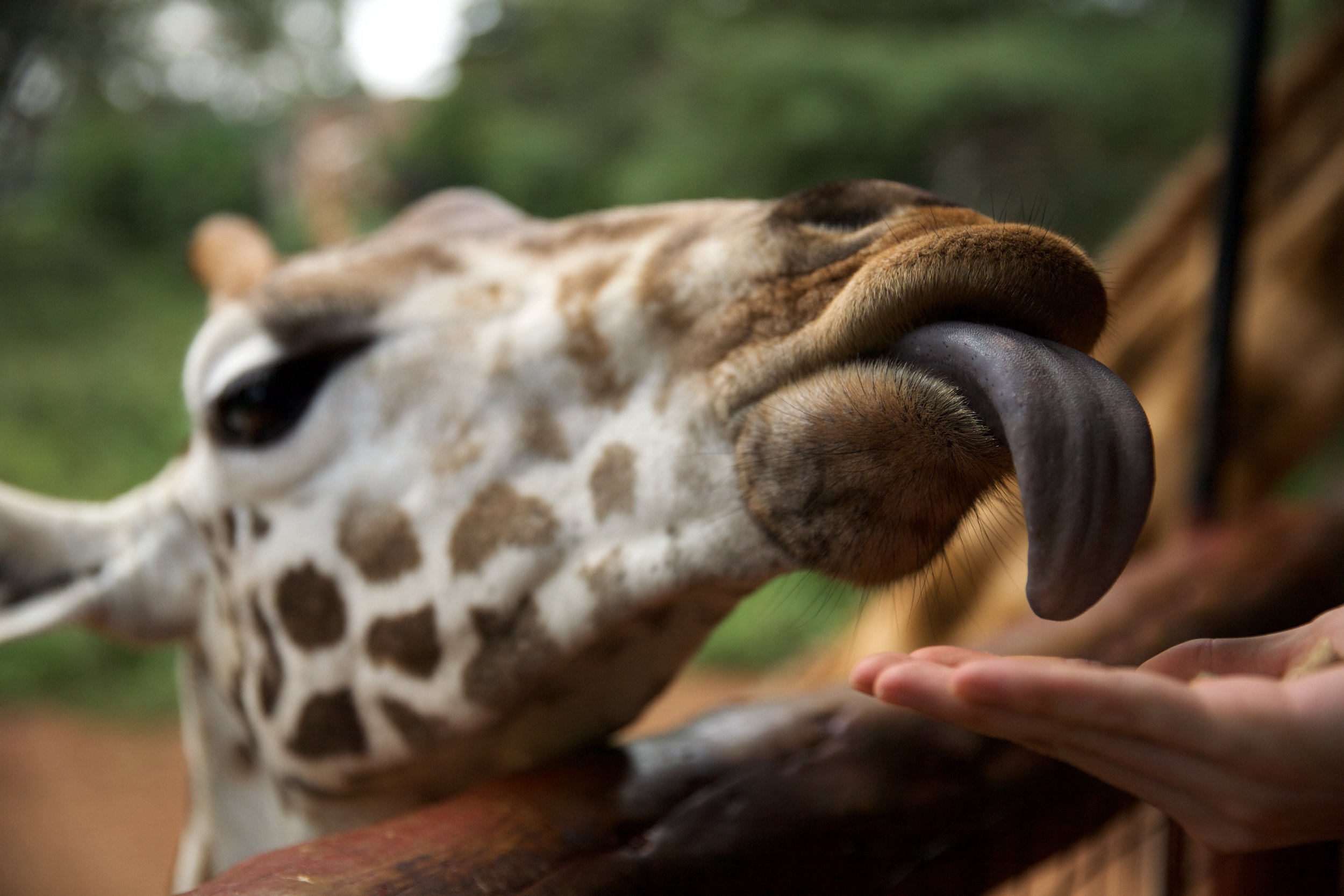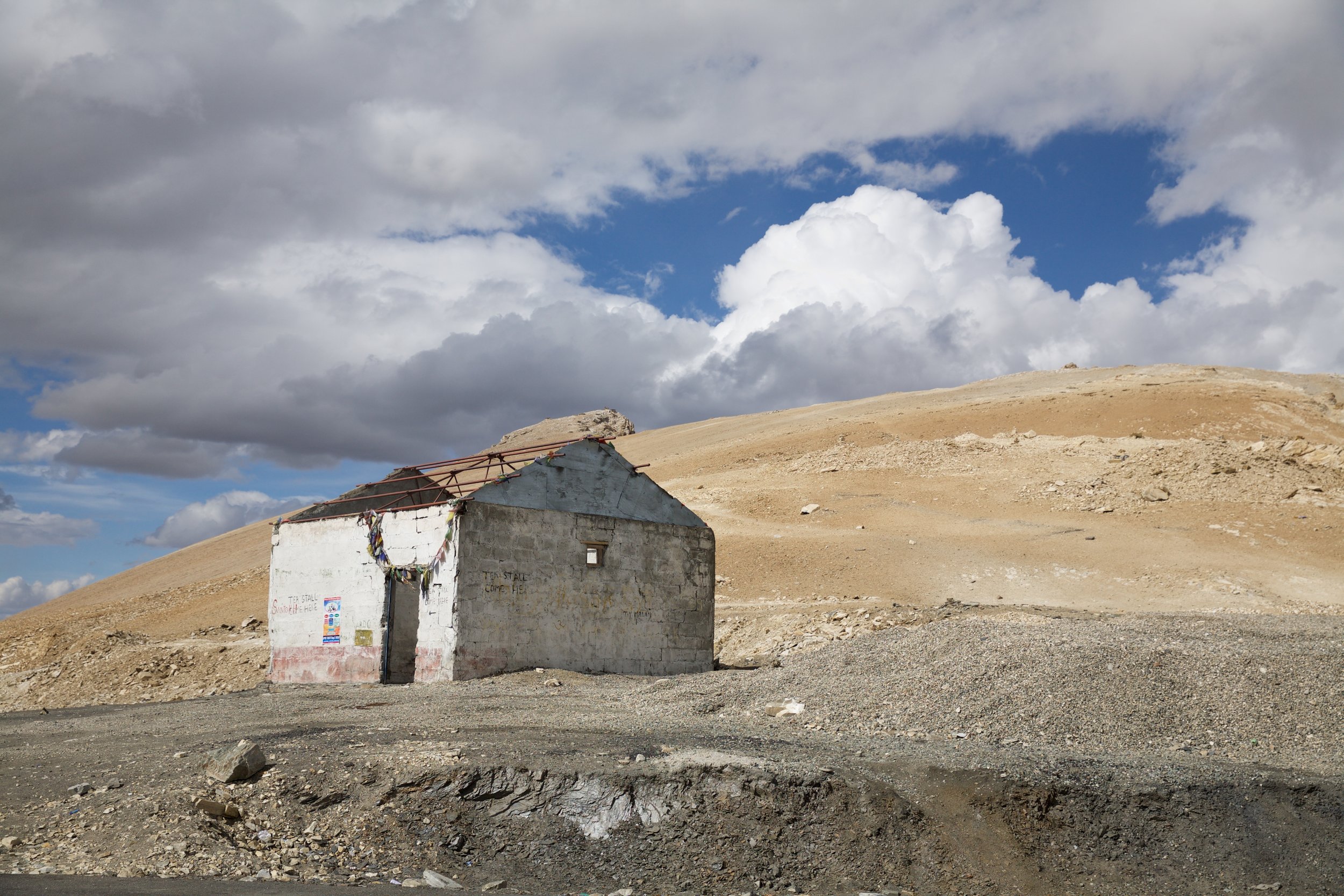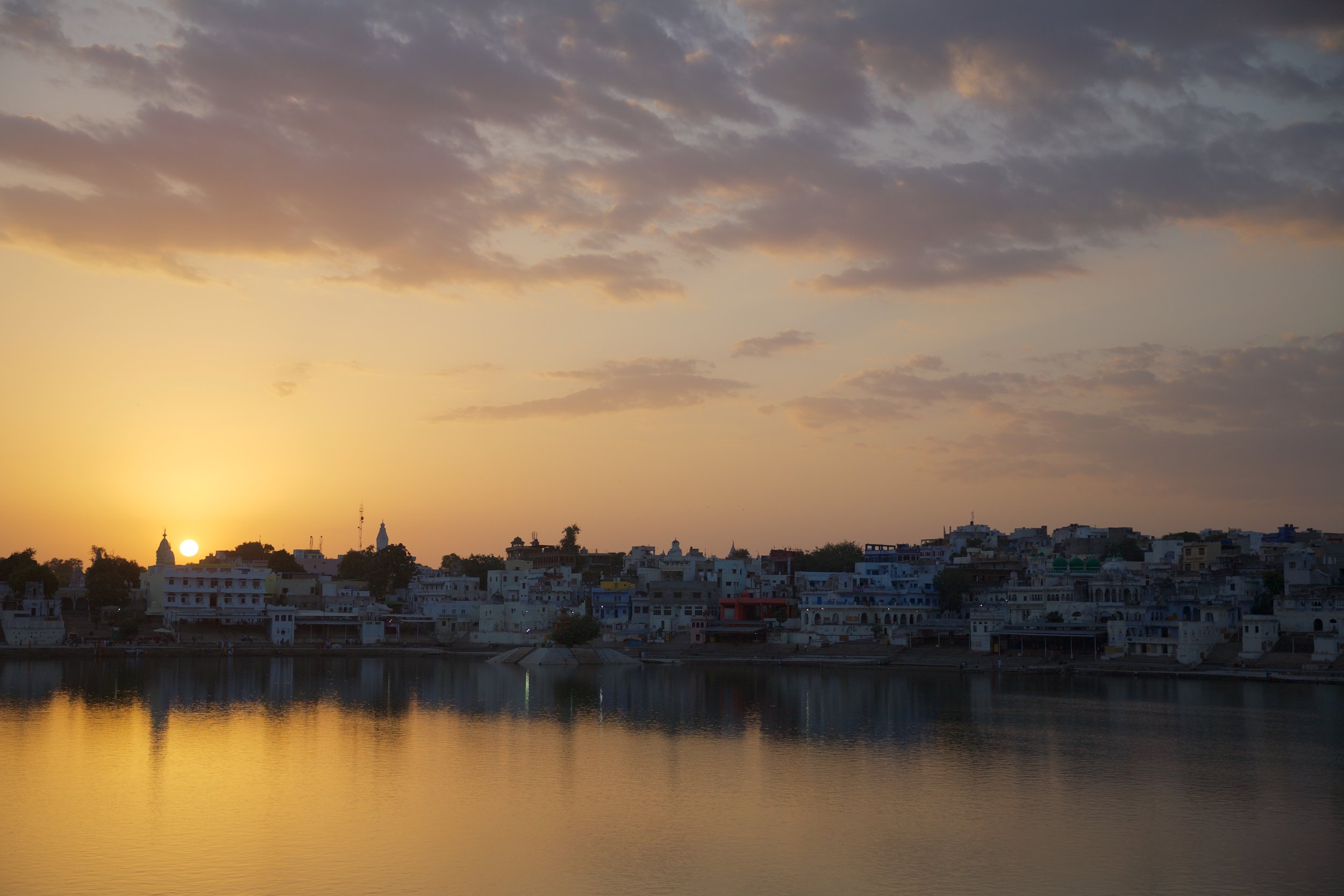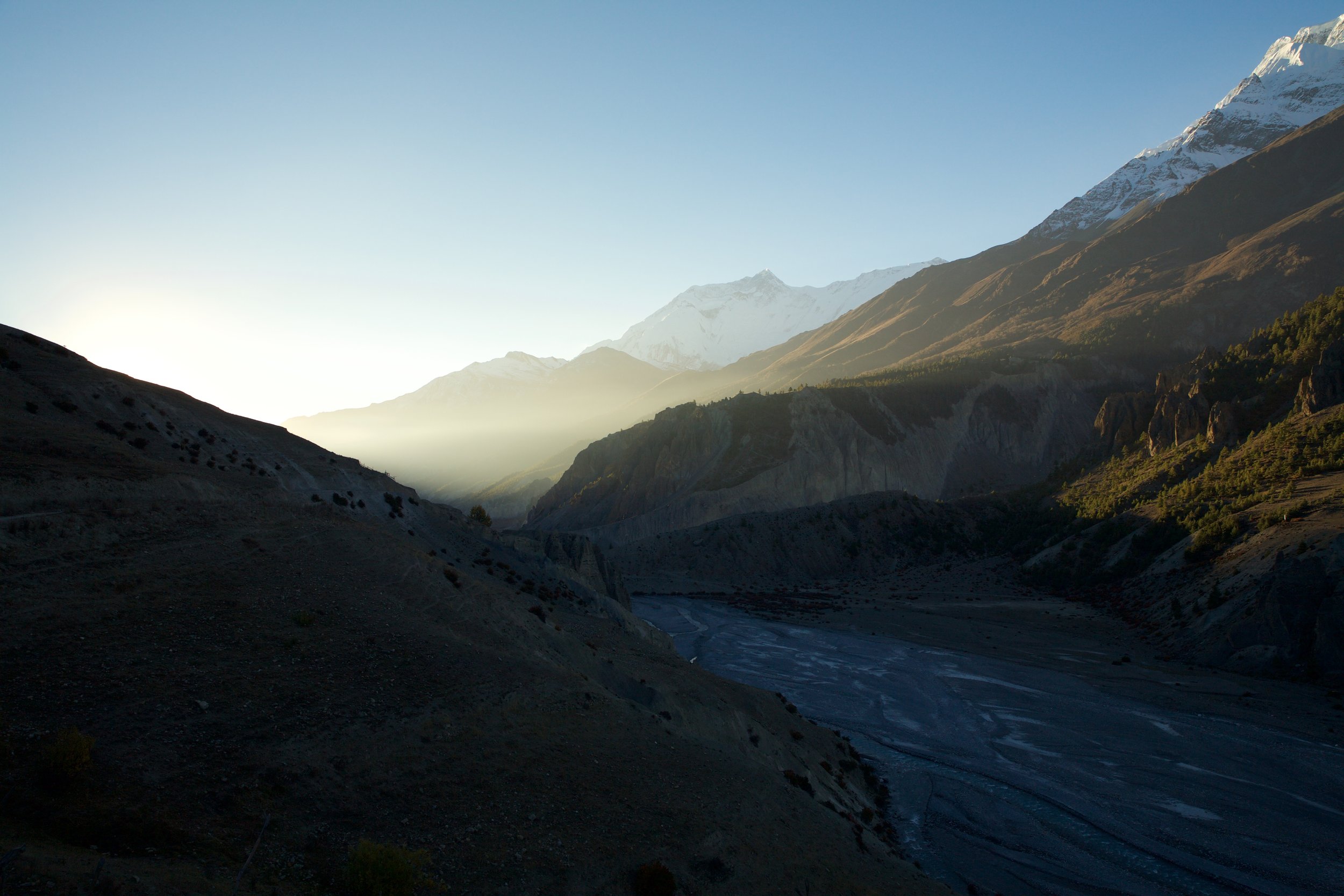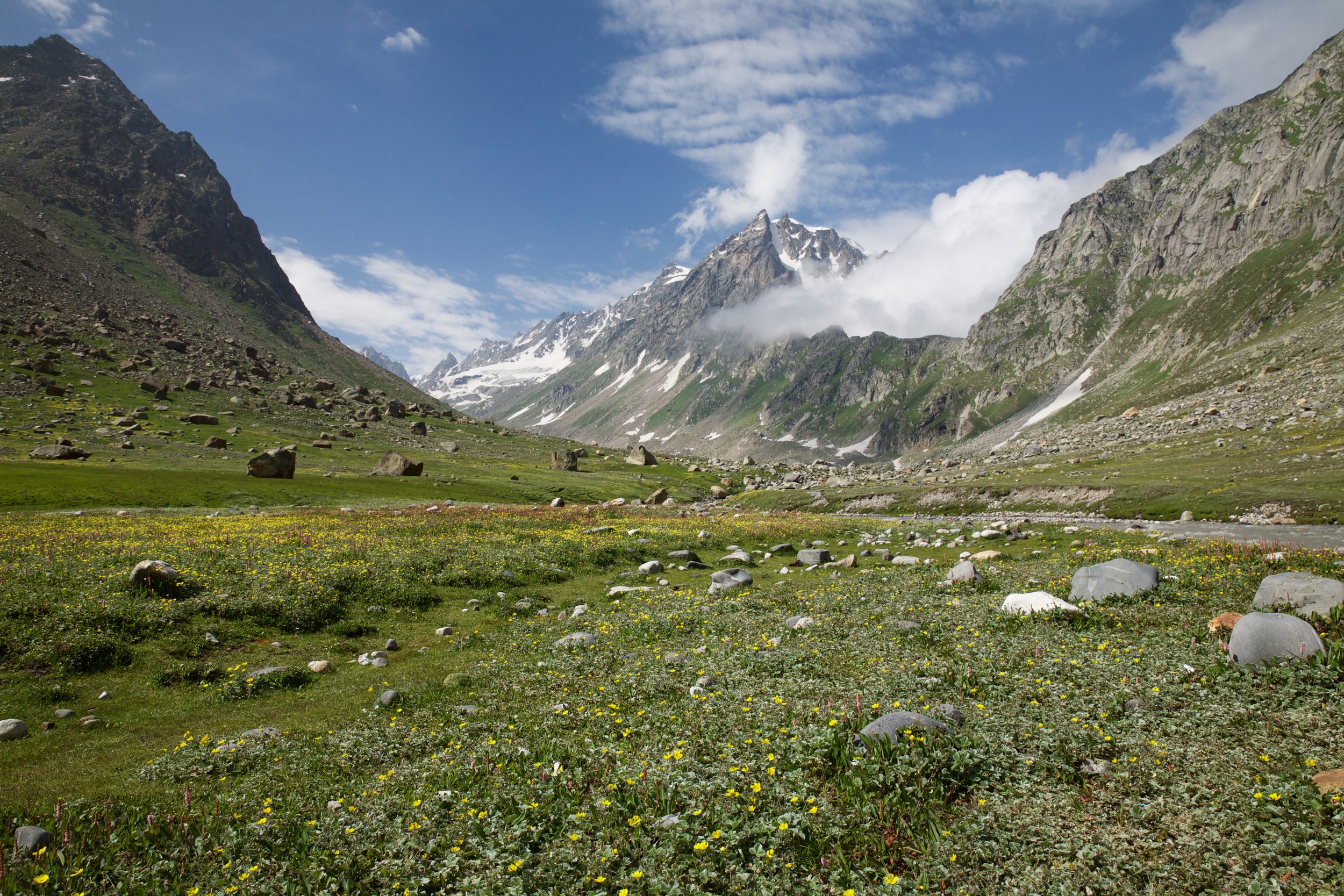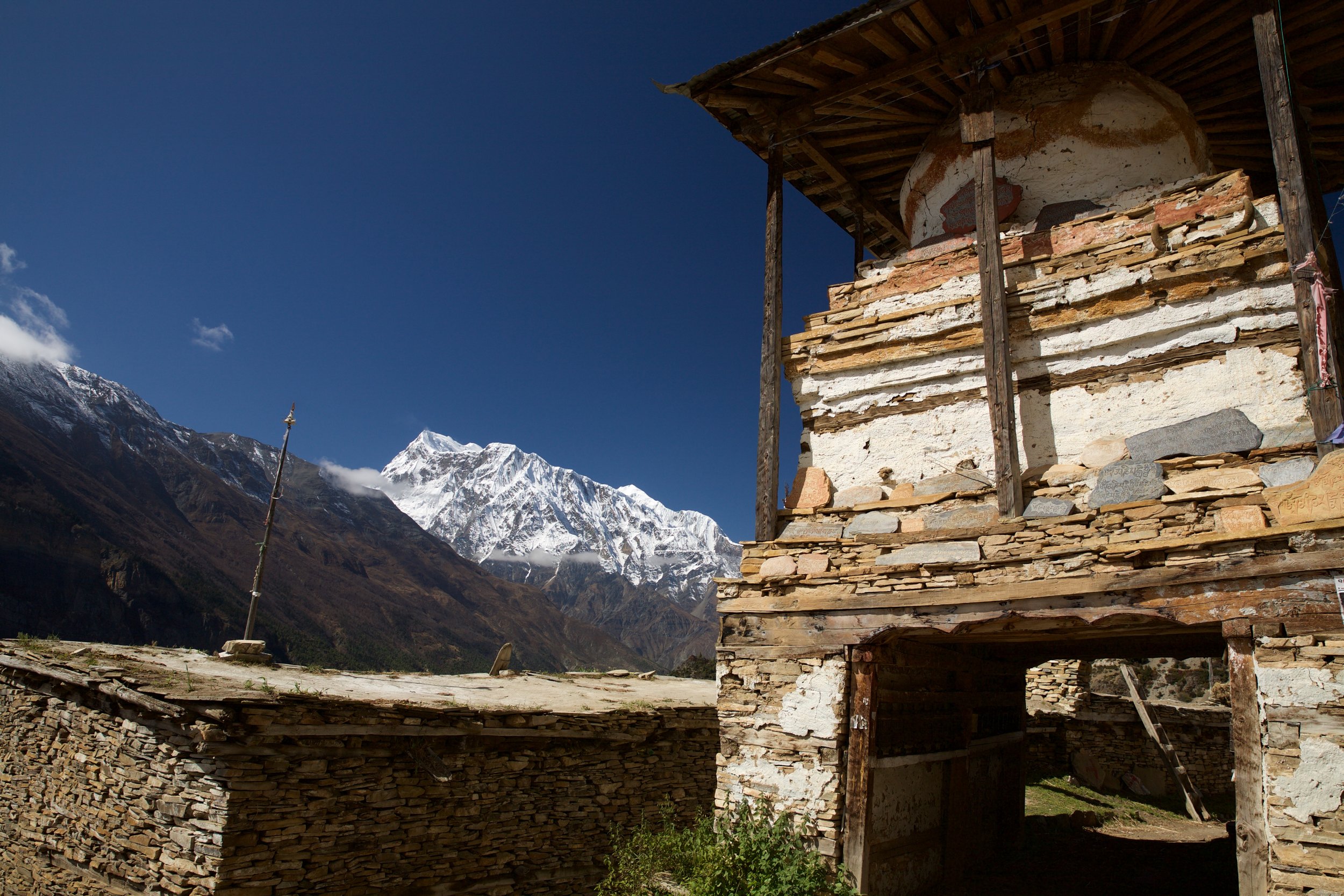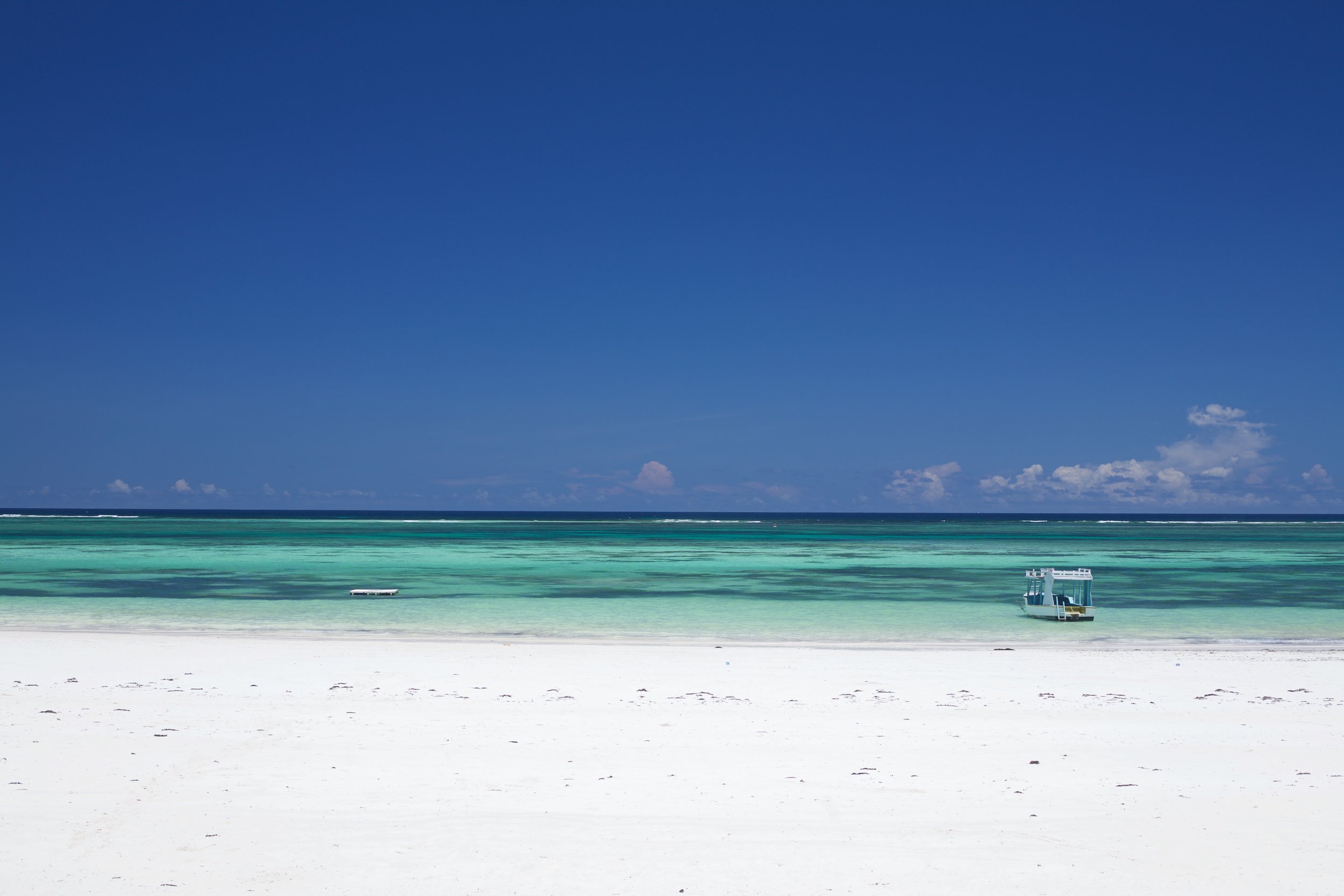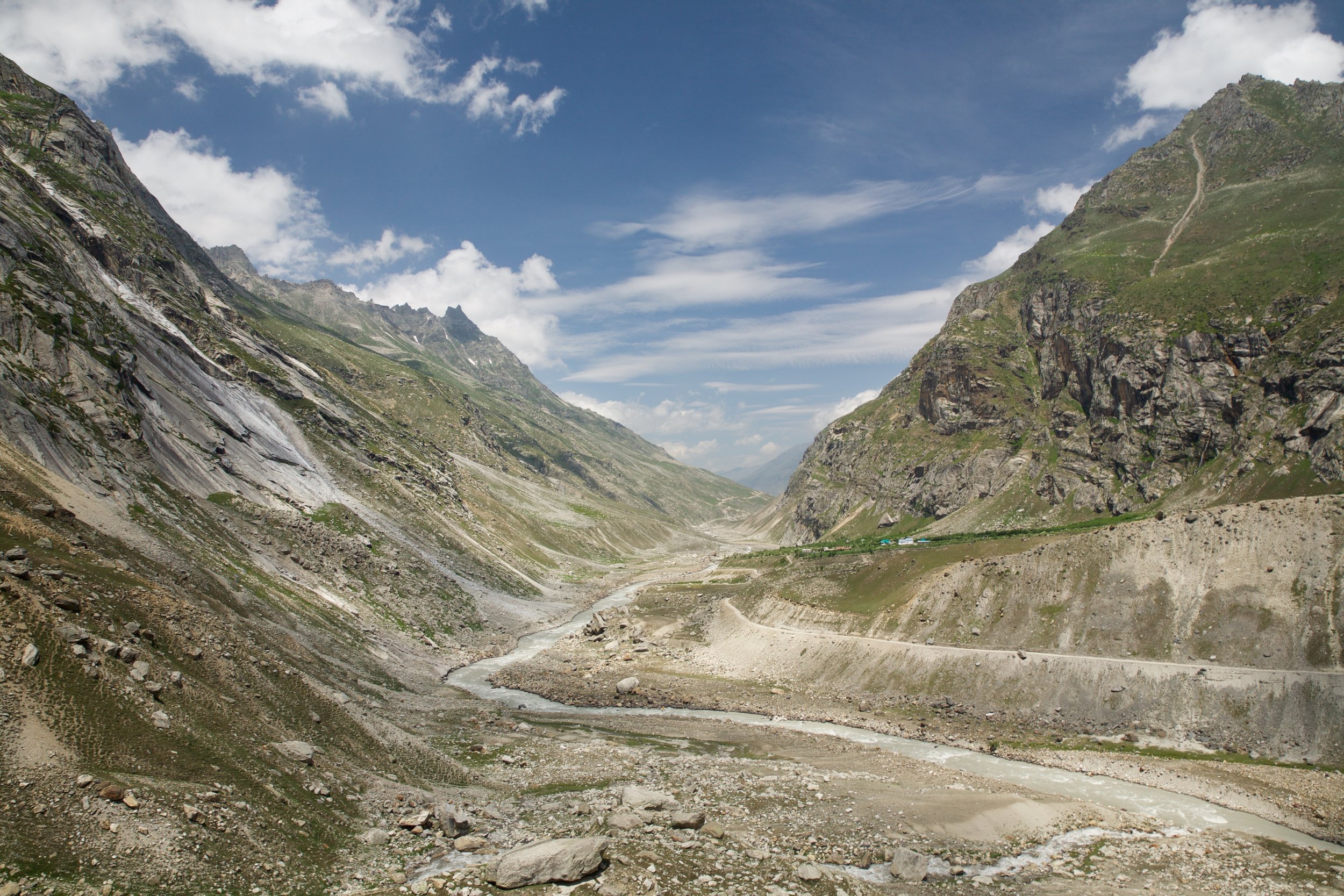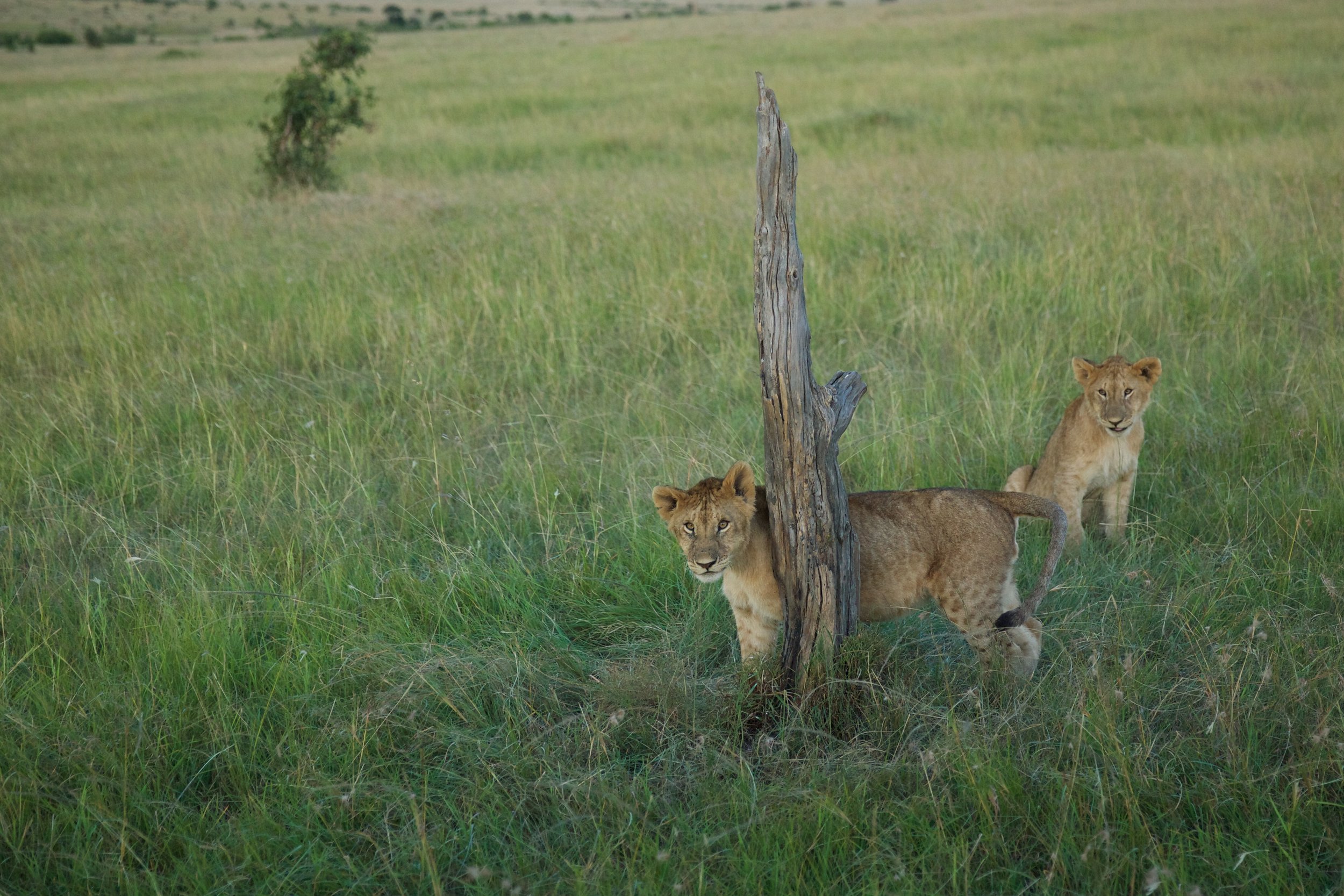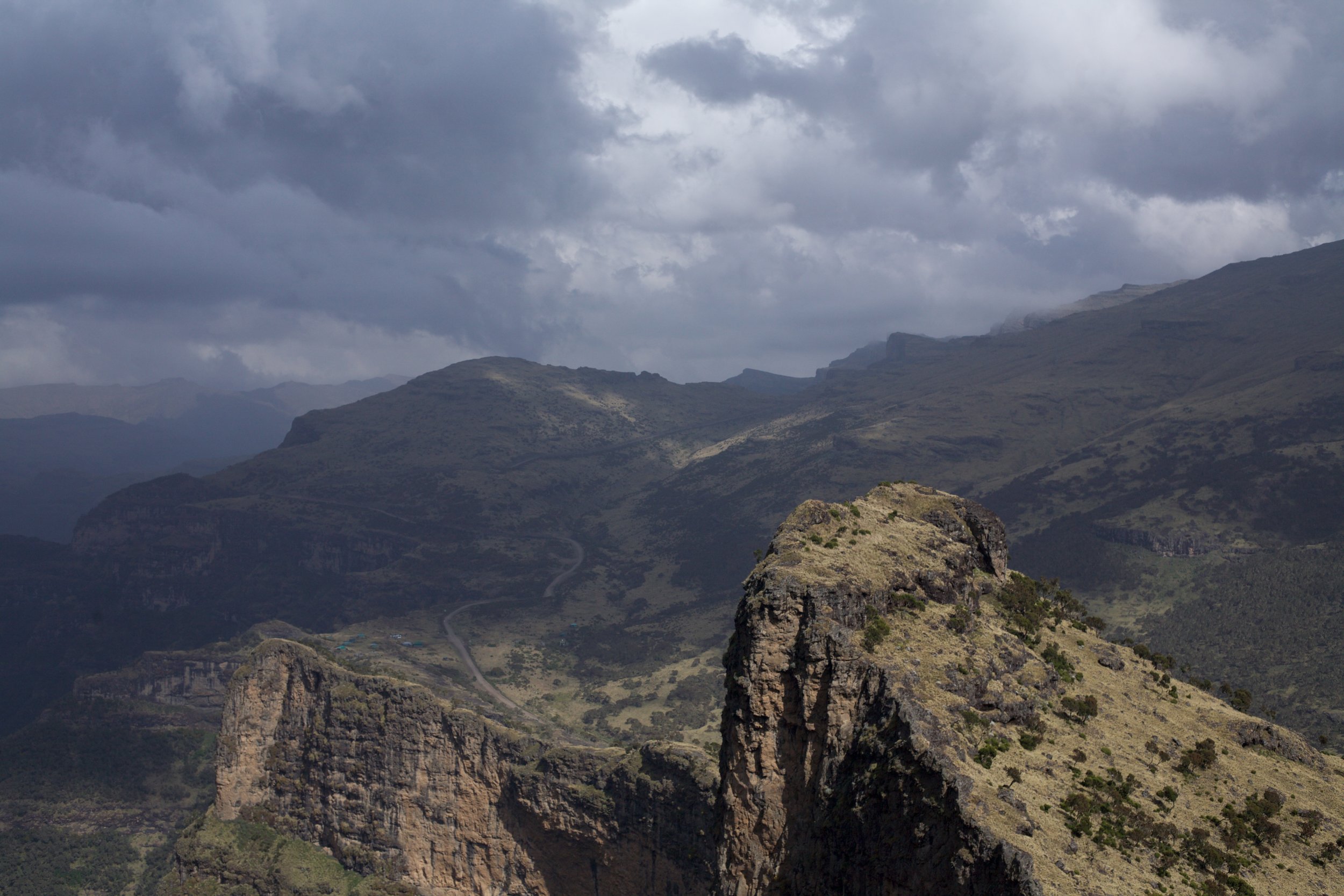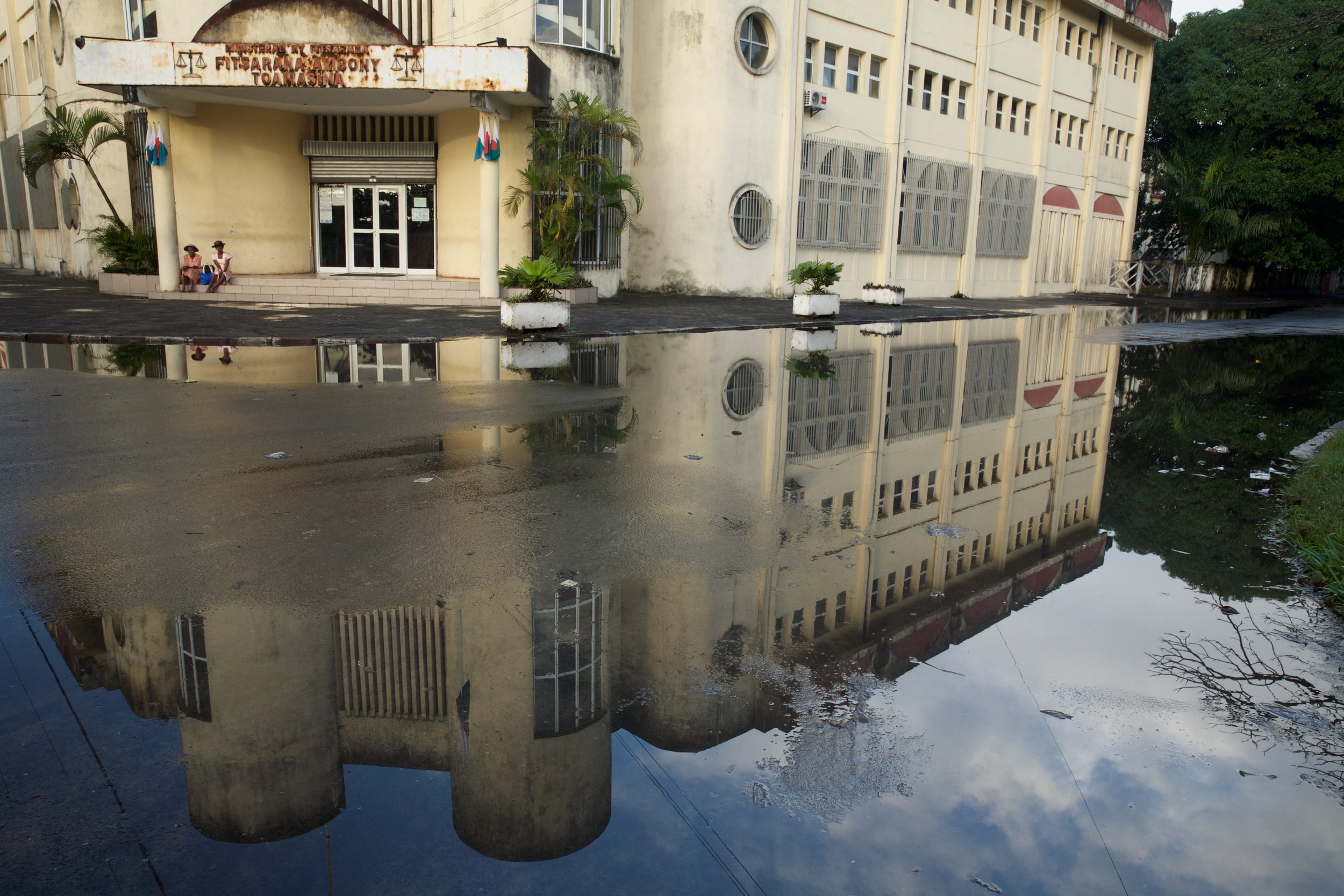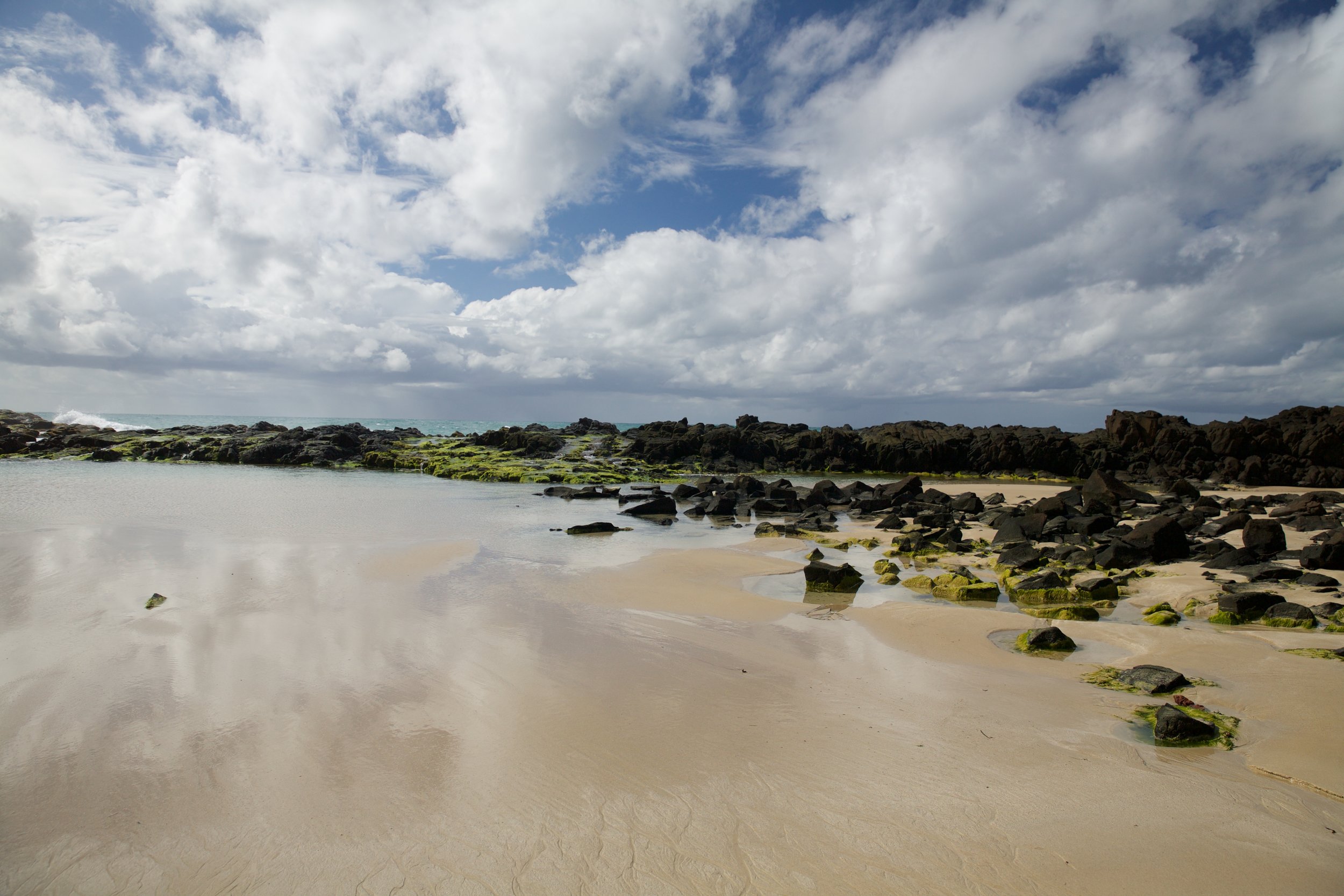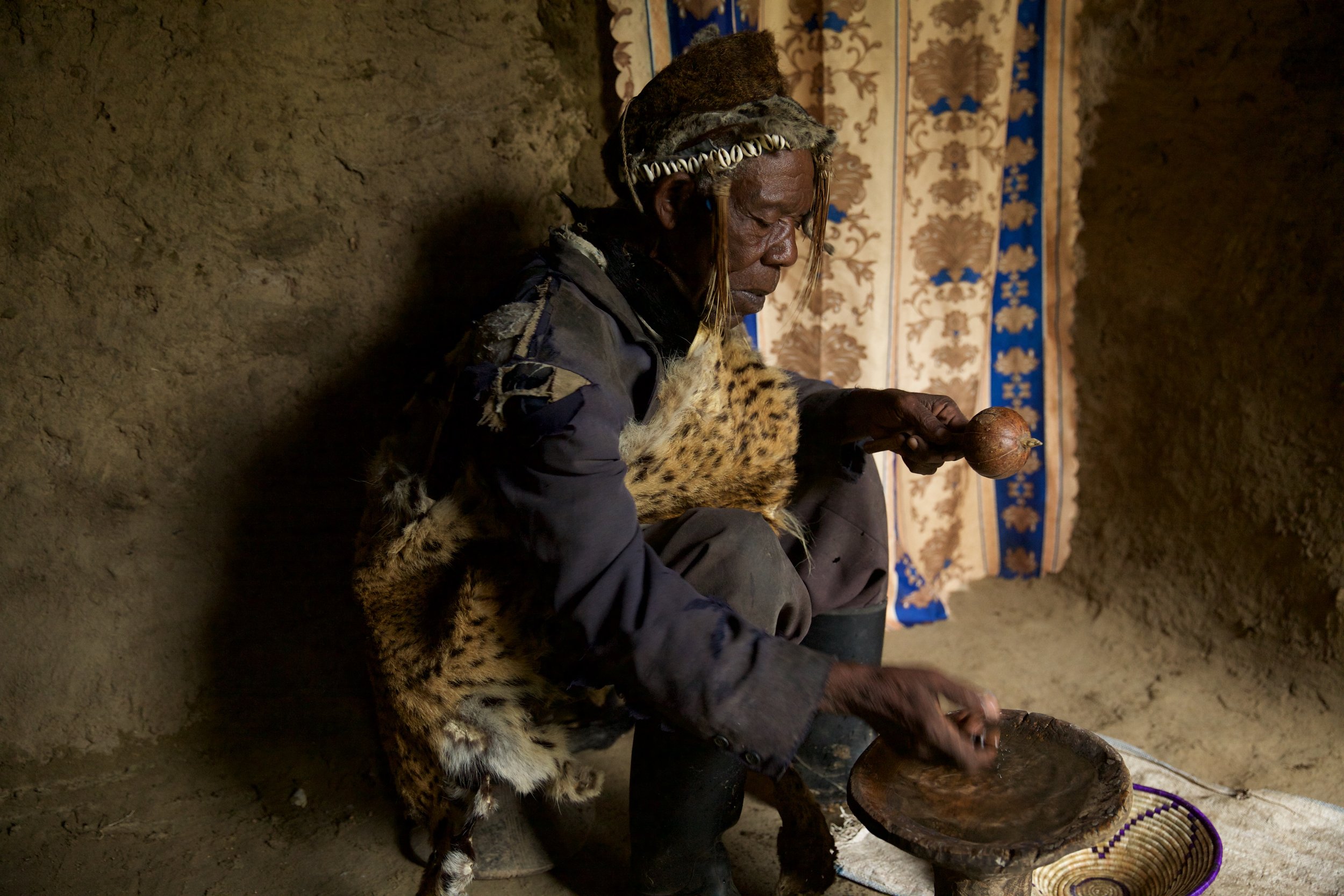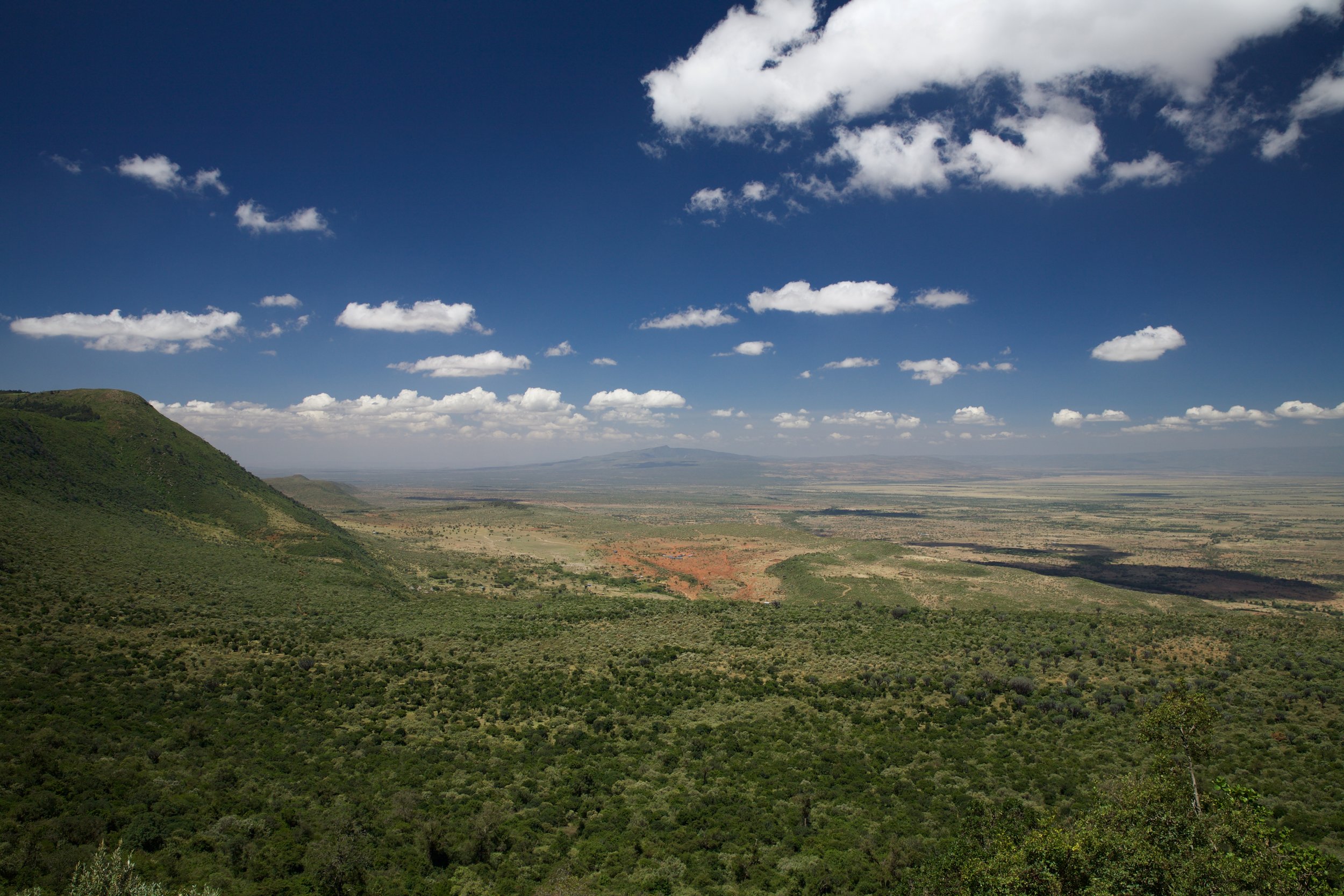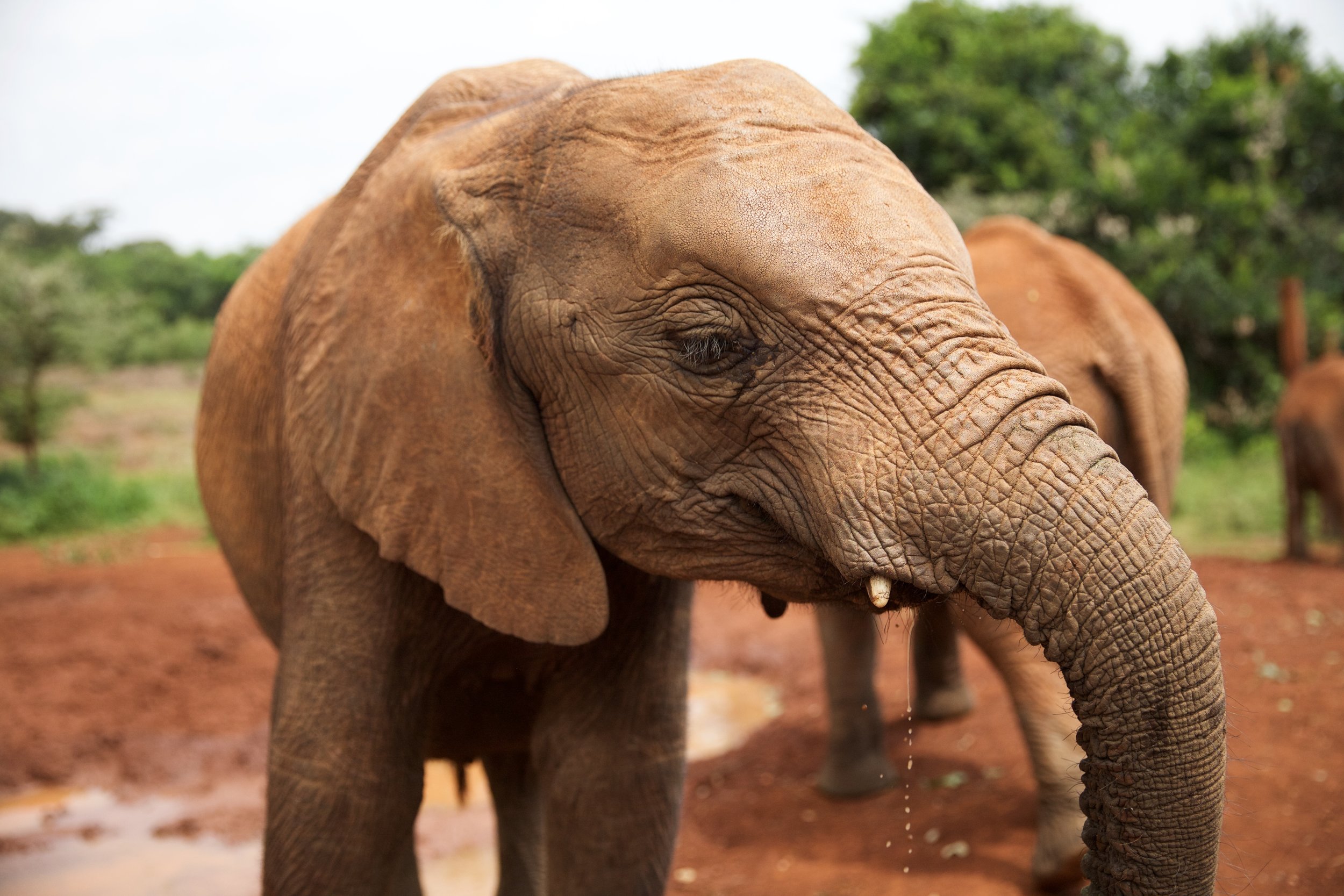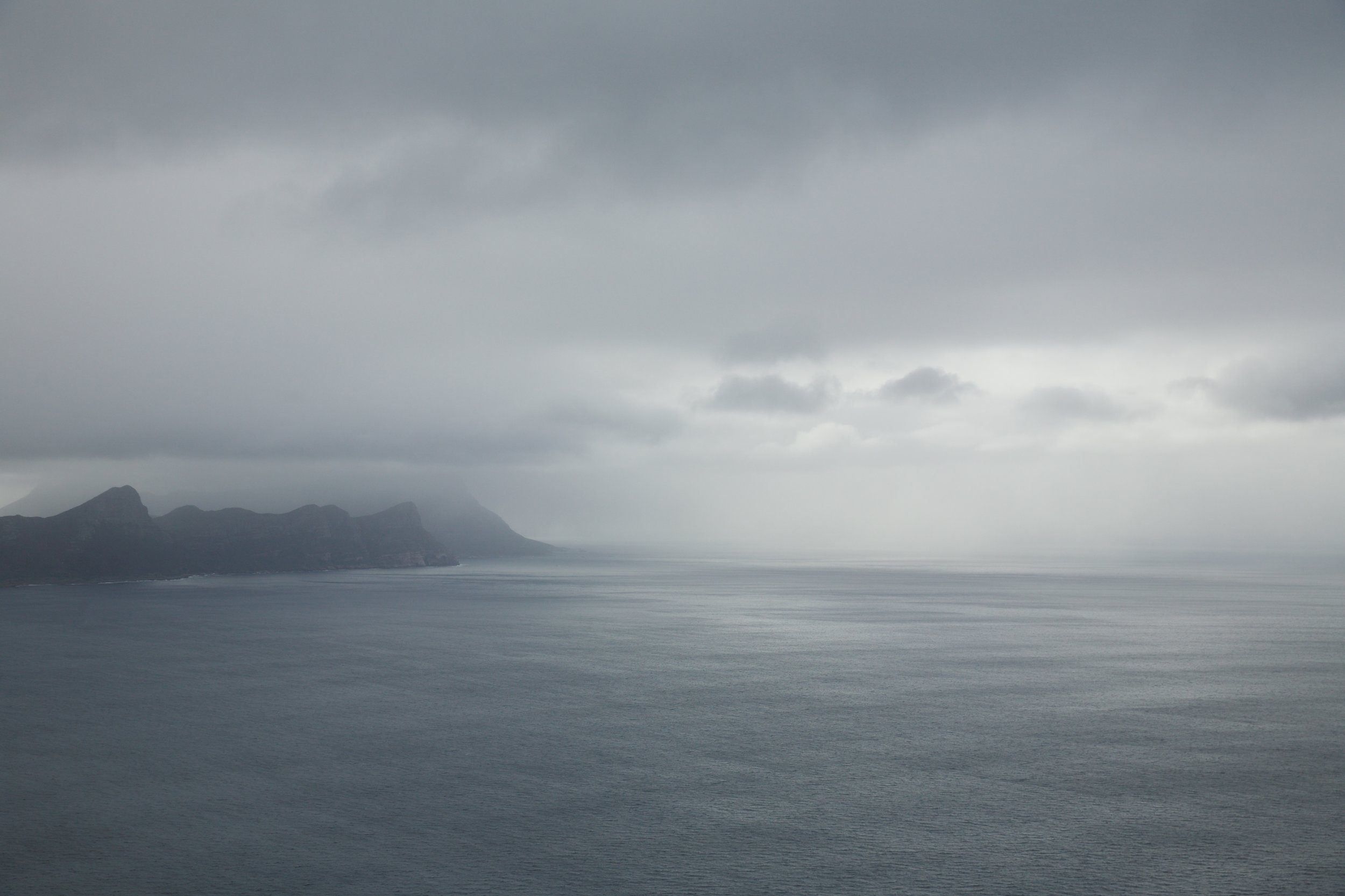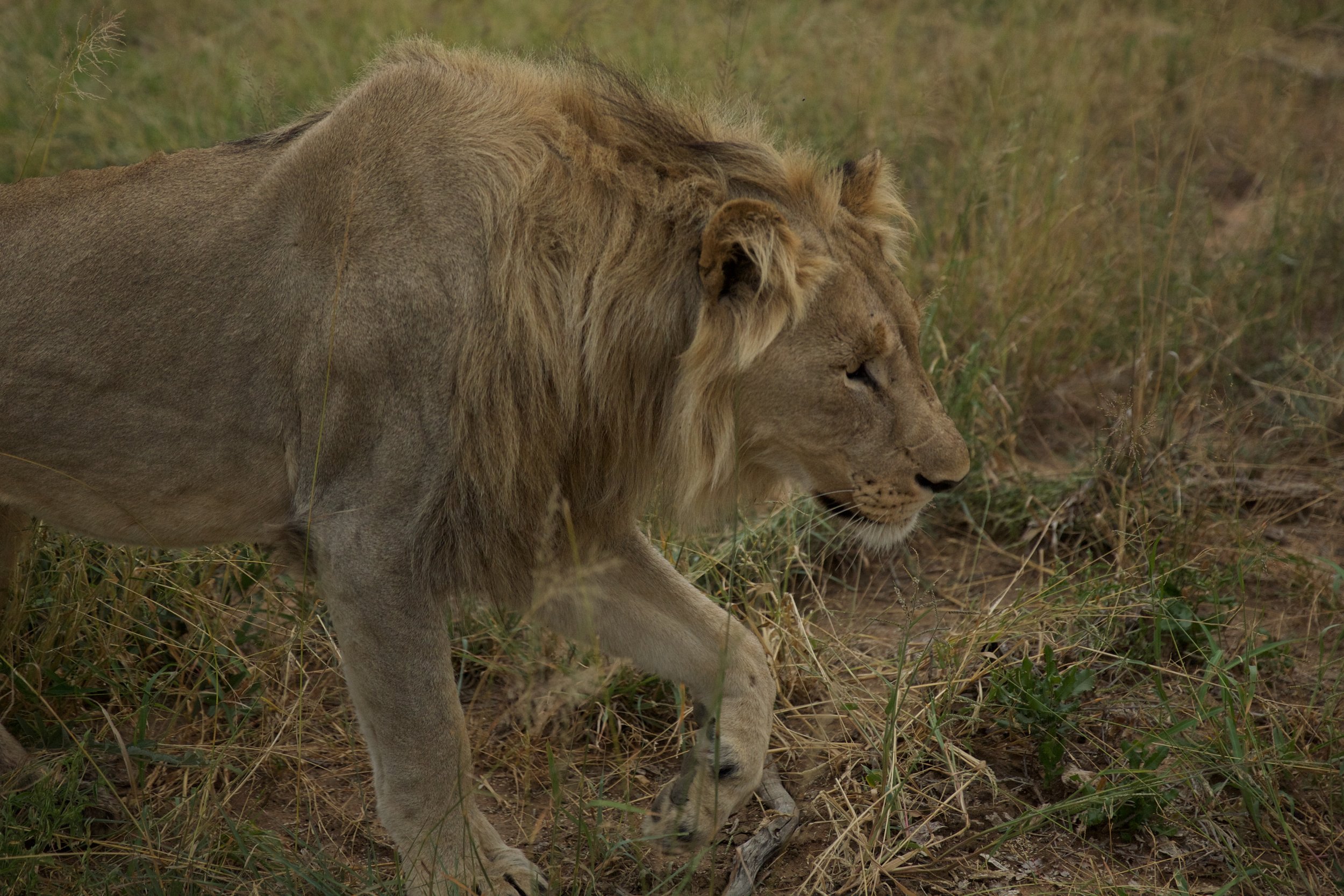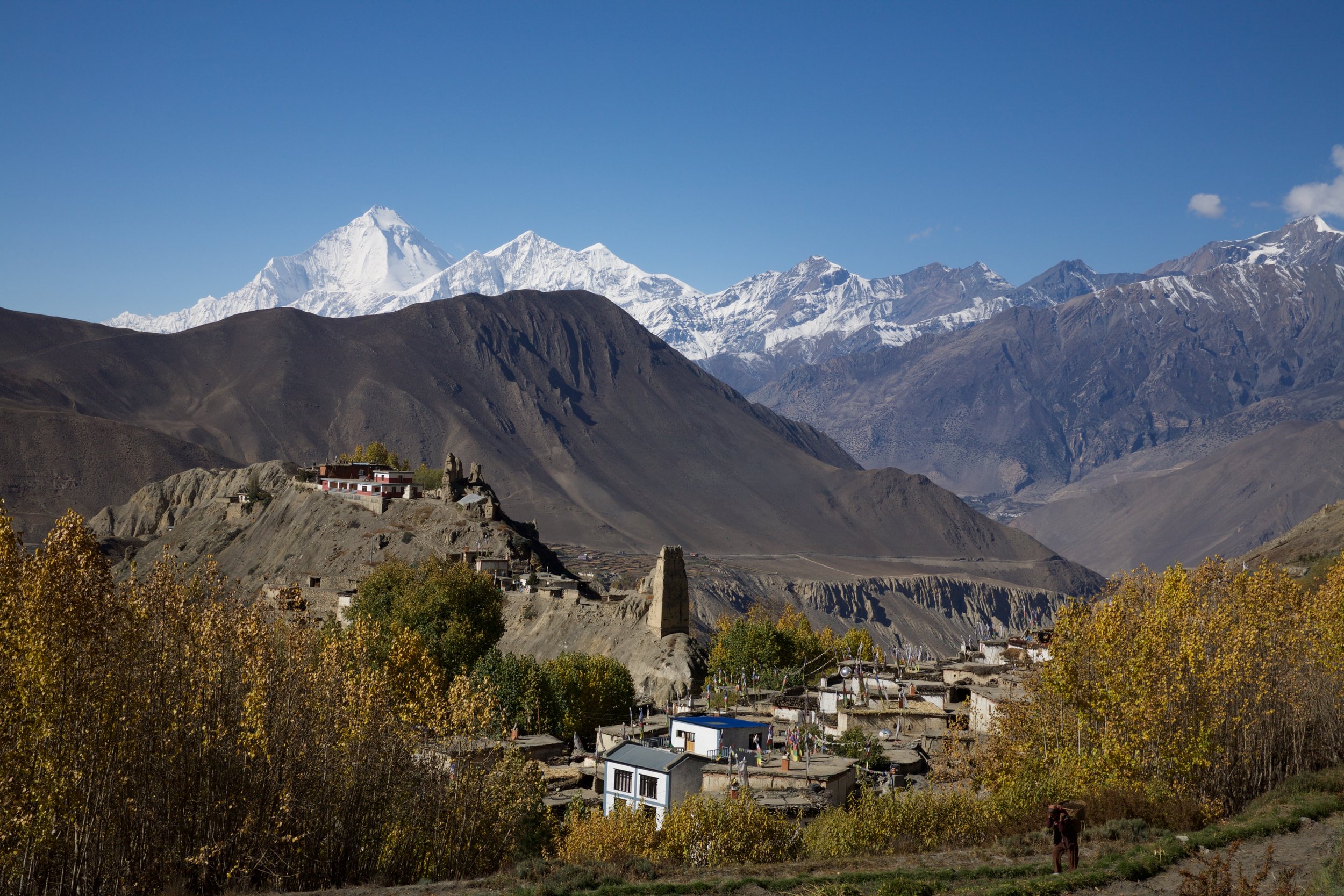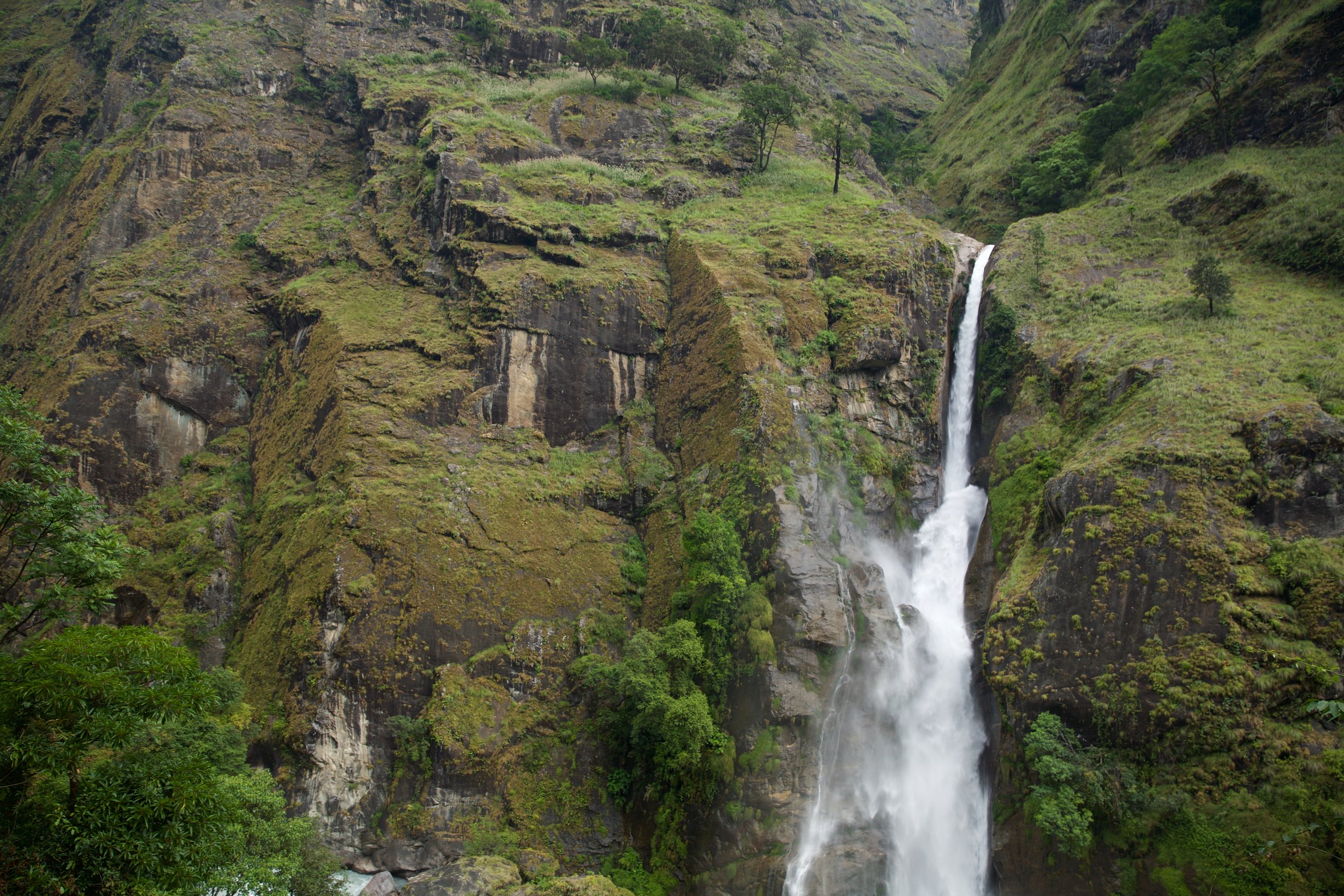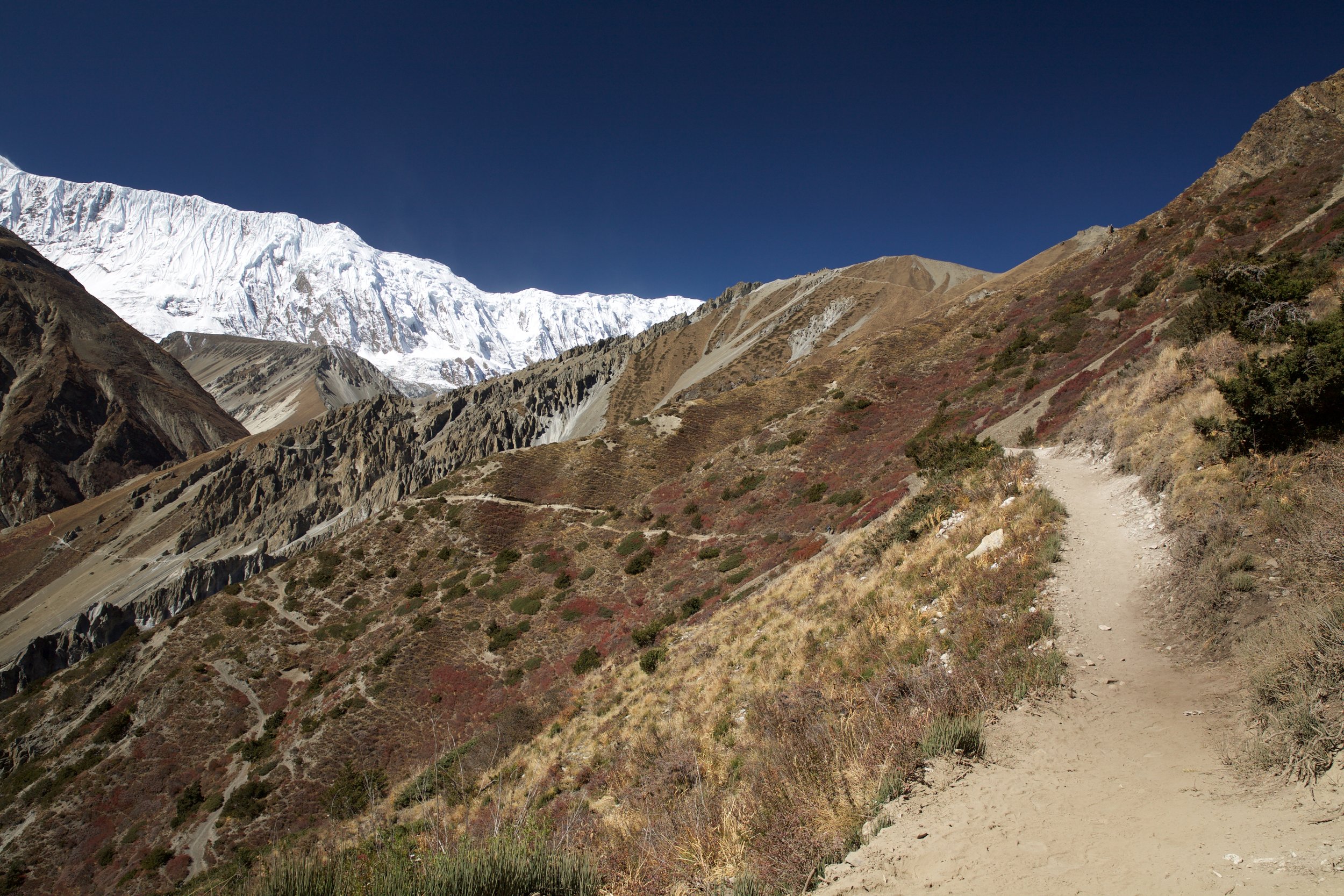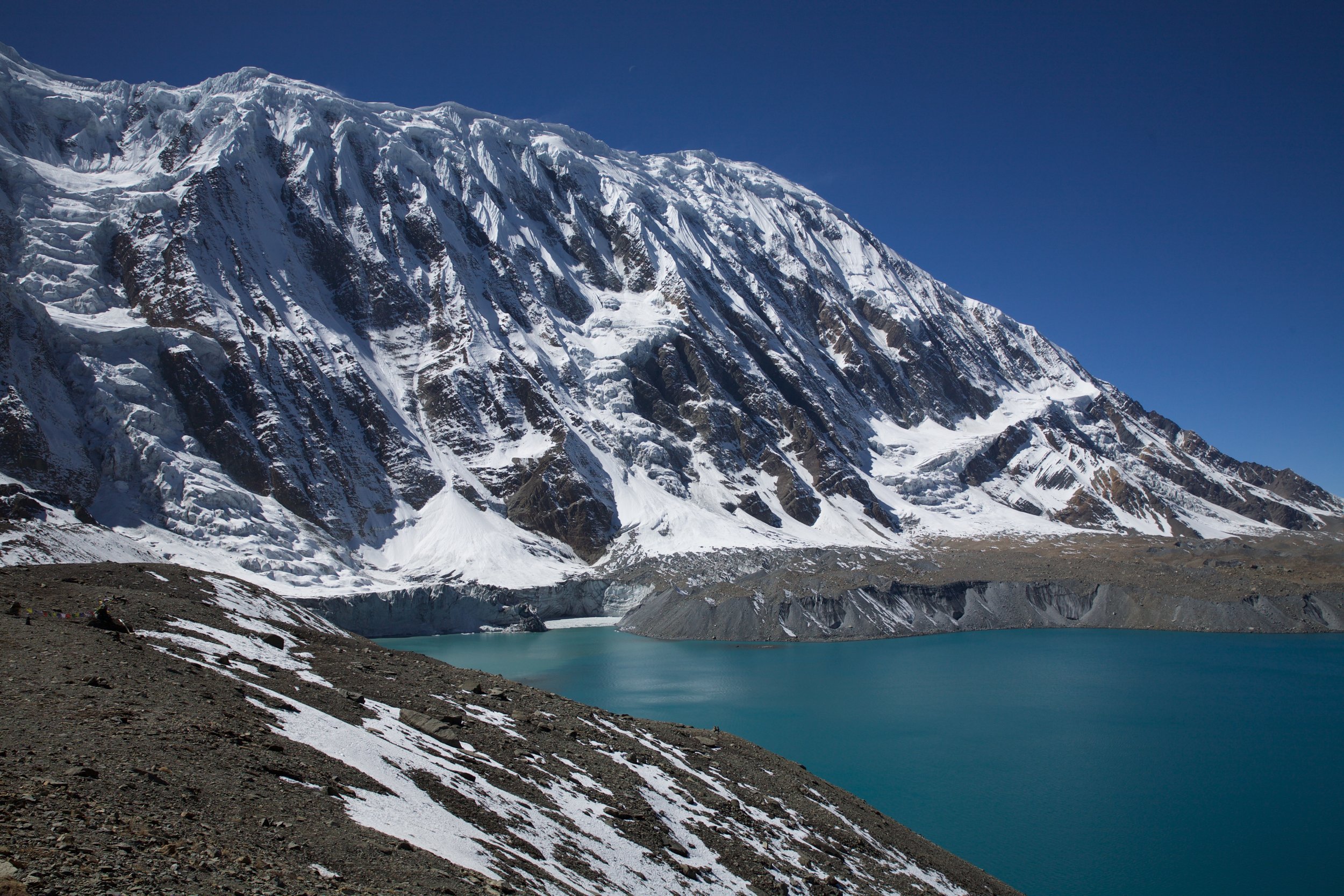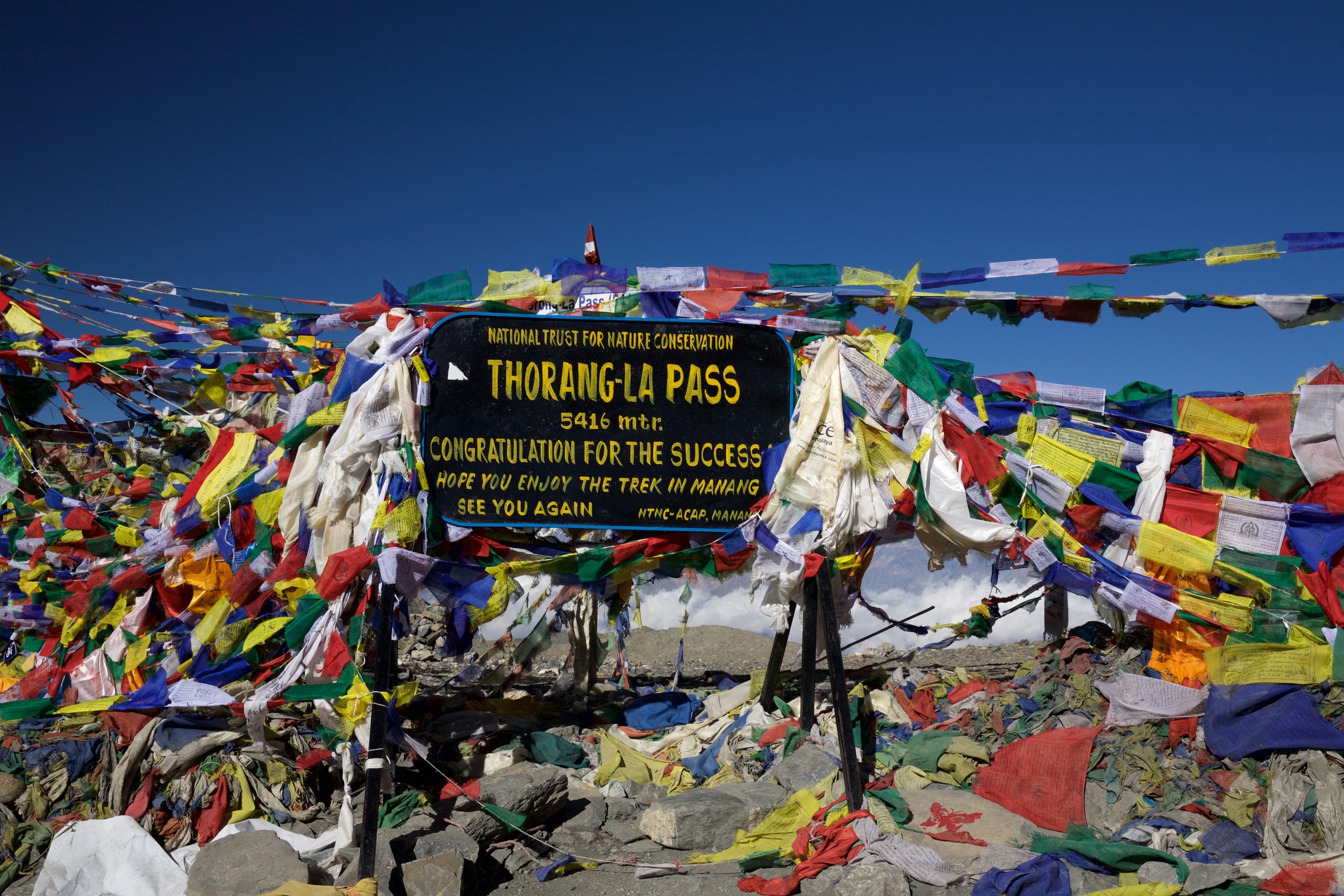Africa's second-highest mountain lies just south of the equator against a spectacular backdrop of turbulent greenery and boundless Kenyan sky. Four hours from Nairobi and a thousand meters up, Mount Kenya National Park offers refuge to species that range from elephant and buffalo to thumb-sized chameleons and chattering rock hyrax—and, of course, outdoor enthusiasts whose imaginations have snared on the jagged steeples of Mount Kenya's triplet peaks. The scenery in this protected tract of Kenyan heartland is straight out of an adventure film: waterfalls tumble from volcanic ridges millions of years old; giant lobelia and tufts of spiky mountain grass cluster in windswept valleys; glaciers cling defiantly to vertiginous belts of Pliocene rock.
Mount Kenya's apex is a broken cone with three distinct peaks. The higher two—Batian and Nelion at 5,199 and 5,188 meters respectively—require technical climbing skills and can only be summited in season, when the ice and snow are safe to tread upon. The third summit is 4,985-meter Point Lenana, whose lower elevation (16,355 feet) makes it accessible to trekkers but still offers a challenging ascent. I had no intention of climbing the mountain when I arrived in Kenya, but for more than a month, locals on island beaches and Maasai plains and highland boats had enthused about the surfeit of natural beauty on display around Kenya's eponymous high point. There seemed to be national consensus that I had let my hiking boots languish long enough.
And so it was that I met with a pair of local guides named Ben and Joshua in a leafy suburb of Nairobi last March. The sky was dark with impending rain. I was fresh from two weeks on Kenya's sweltering coastline, where waving a fan or swiping at a mosquito was considered intense physical activity. Ben and Joshua had decades of experience on Africa's highest summits, and I had a fistful of shillings and three wishes: to walk alone; to stop for photos as often as I liked; and to not die on the mountain. We agreed to set out at five o'clock the following morning.
The drive to Chogoria town on Mount Kenya National Park's eastern border took us through farmland sown with rows of coconut palms, thickets of banana trees, and mile after mile of rice paddies. Their flooded surfaces winked spectral patterns in the sunlight, clandestine messages playing out on a vast mirrored plain. Rice farming in this region had increased many times over in recent years, Ben told me. Water was a concern. The rains were late this season; they were becoming more unpredictable. I had heard the same complaint all over the country.
When the rough dirt track inside the park got too steep for our minivan to climb, we shouldered packs and began to walk. While we wandered through bamboo forest and tramped over alpine heath, Joshua recounted bits of his personal history on Mount Kenya's slopes. The mountain had been his livelihood since he was very young. Years ago, he labored on park land: He helped build the system of trails and primitive huts that decorate the mountainsides, carried loads of timber for days at a time, saw friends fall victim to altitude sickness and overwork. The men in charge of park land back then, he told me, were not good men. He spent months alone in a cabin at 3,300 meters, keeping watch over the furniture and other accoutrements—simple things that had taken weeks of literally backbreaking work to import. He would stay until another caretaker was dispatched to replace him; sometimes, he said, the food ran out before a fresh man arrived. Once, bandits broke into the cabin. Joshua hid in the attic, a machete in hand, while they ransacked the property. The bandits took the mattresses, the cookware, the tools and weapons and blankets and what little food remained. They did not find Joshua. He waited for days, hungry; when no one else arrived, he followed a foreign expedition down the mountain. He didn't return to the cabin for a long time.
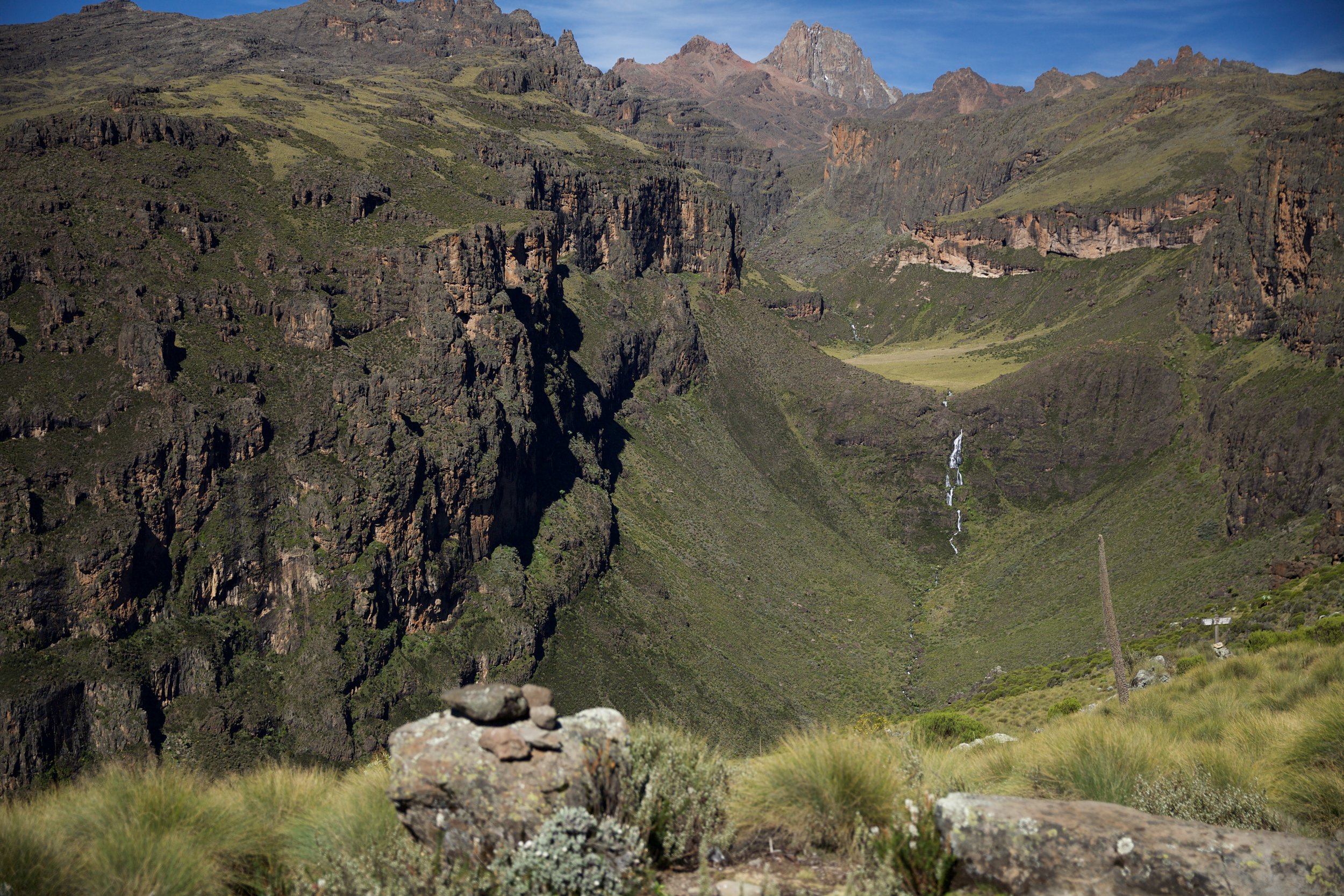
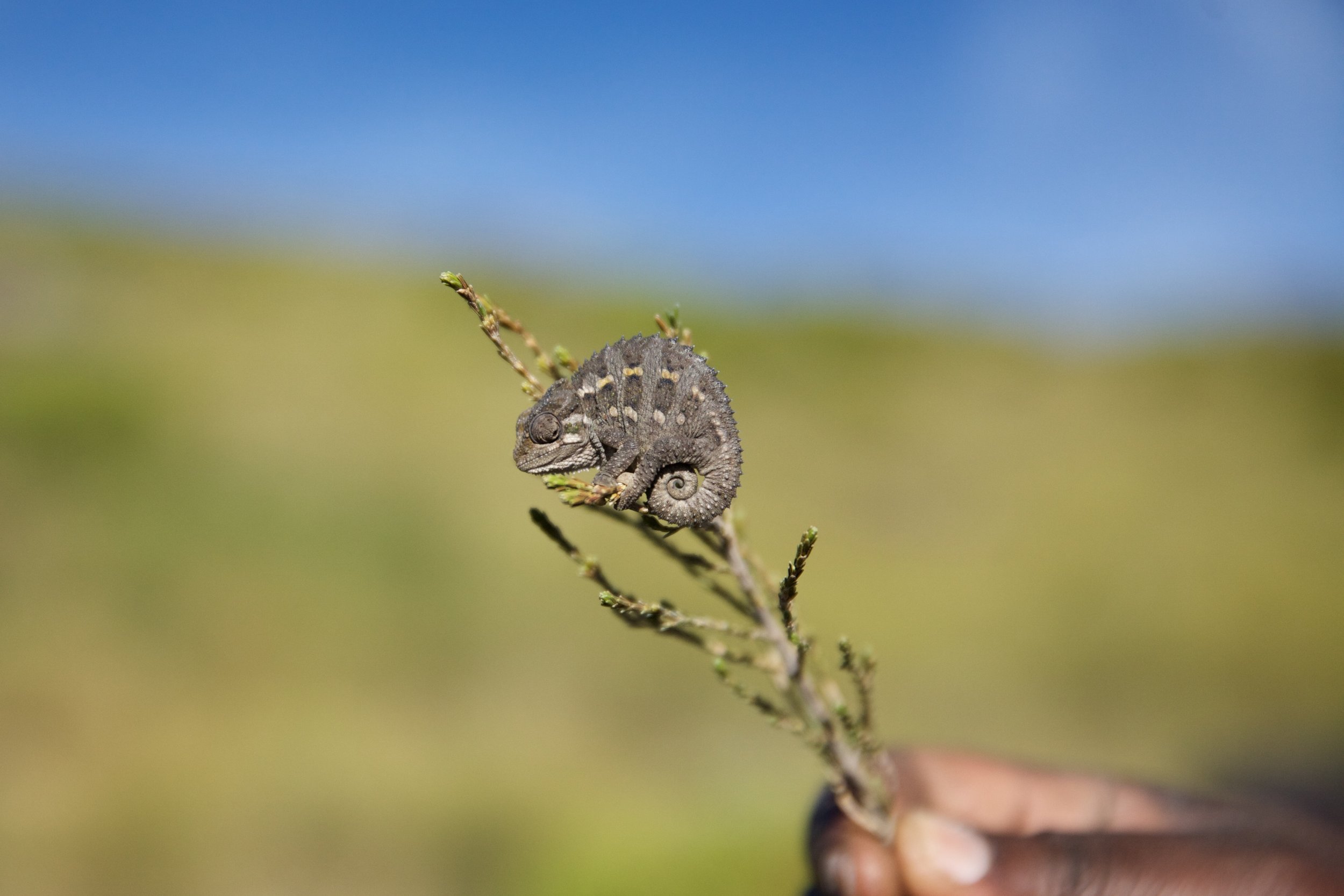
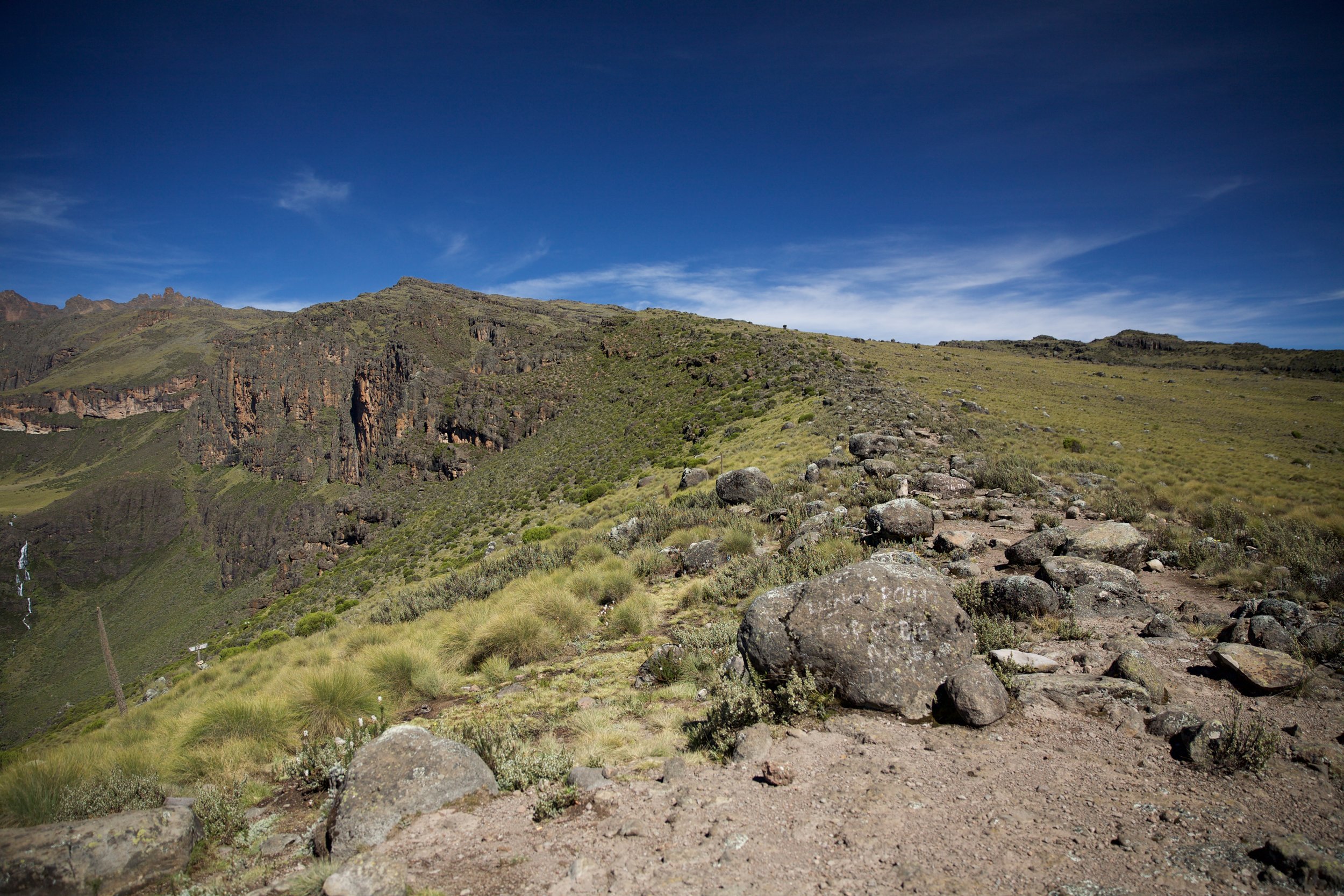
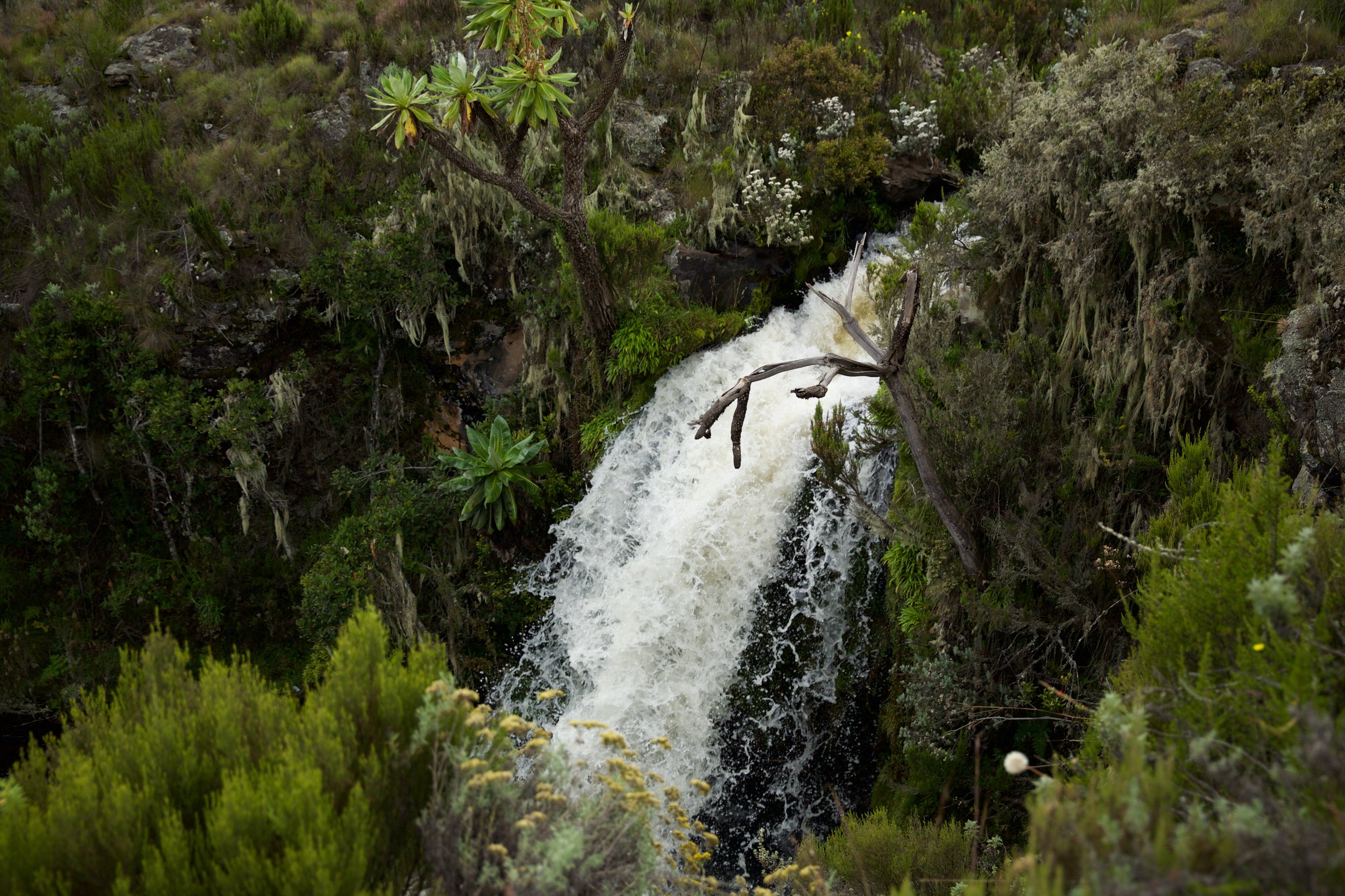
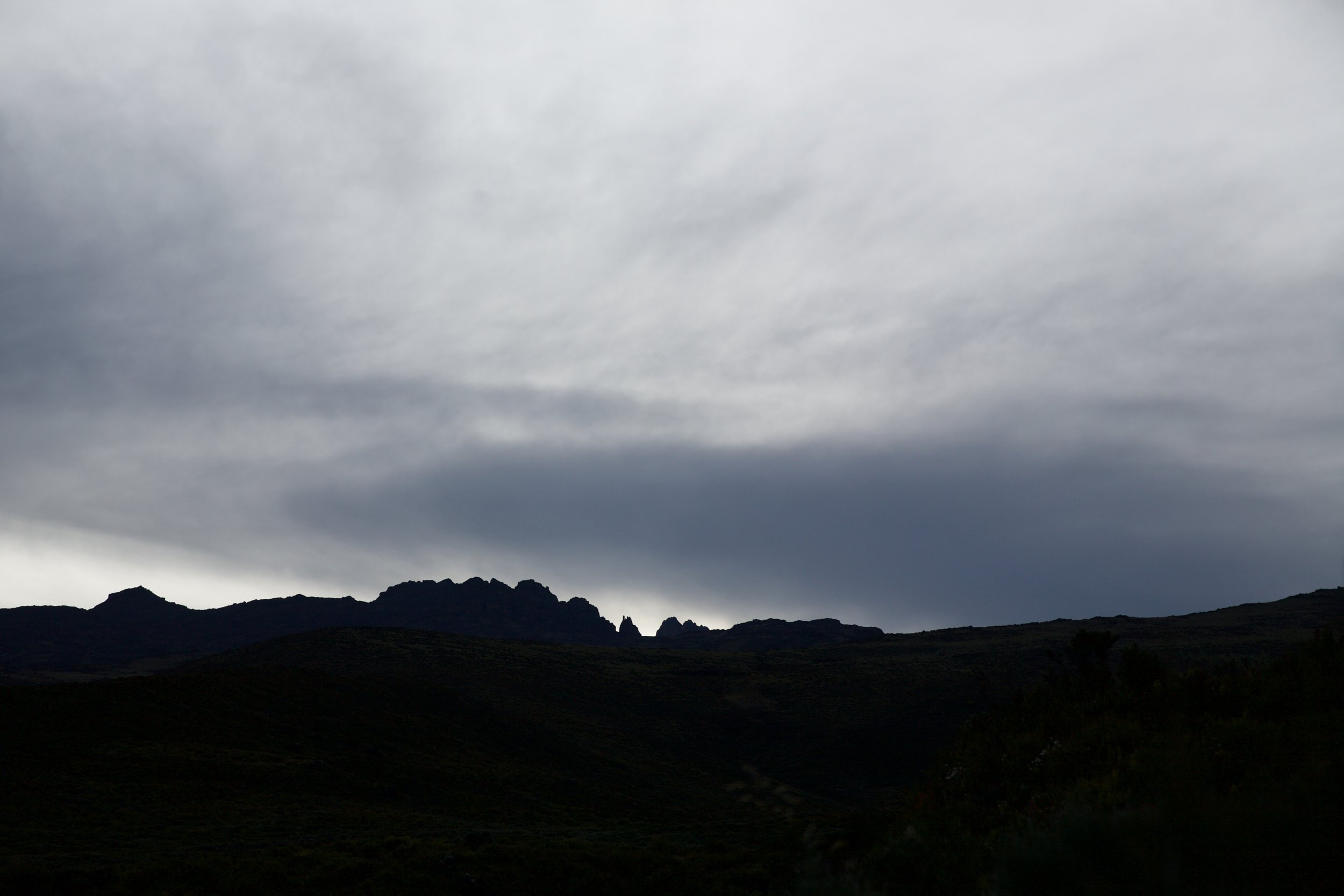
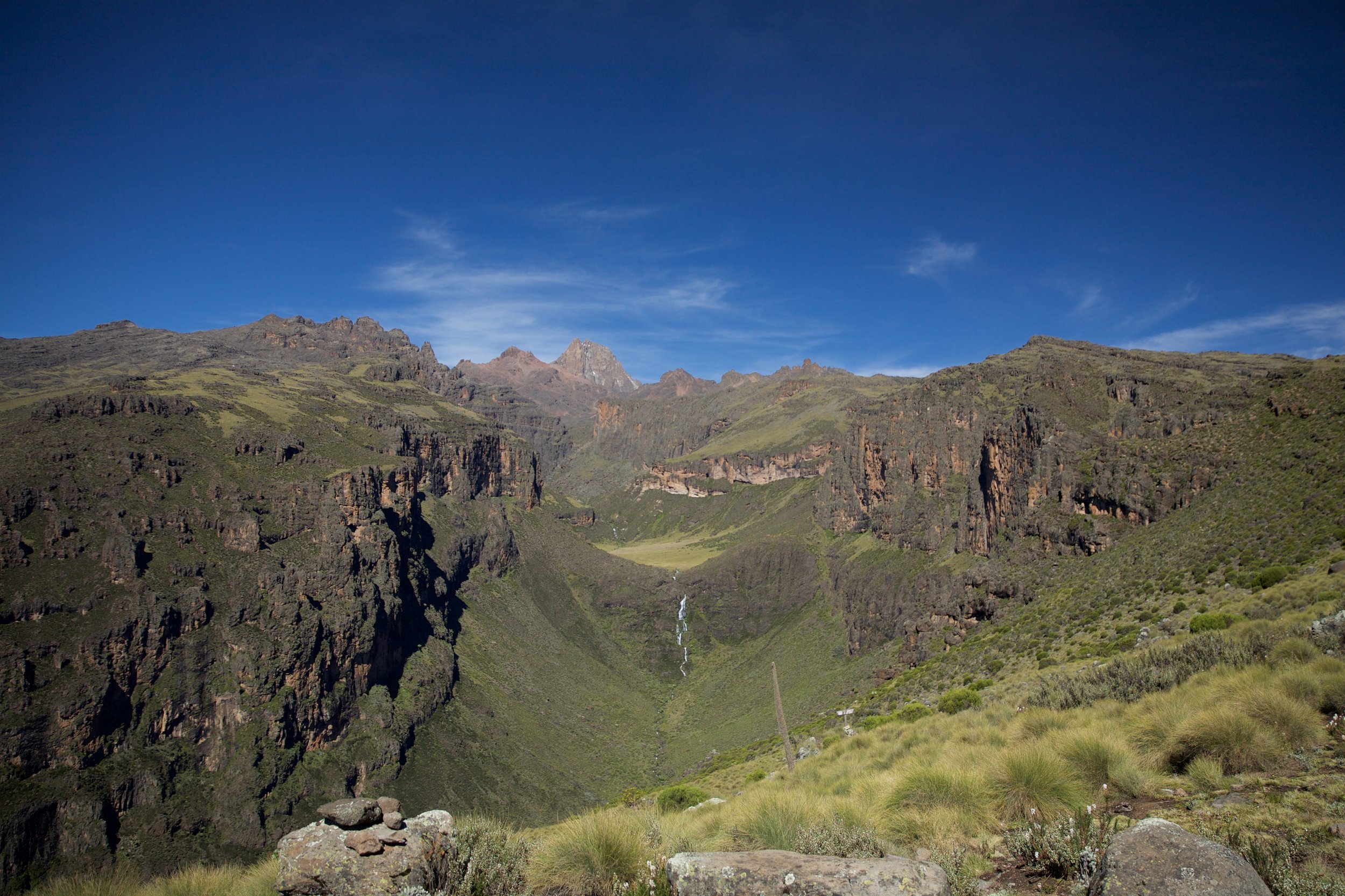
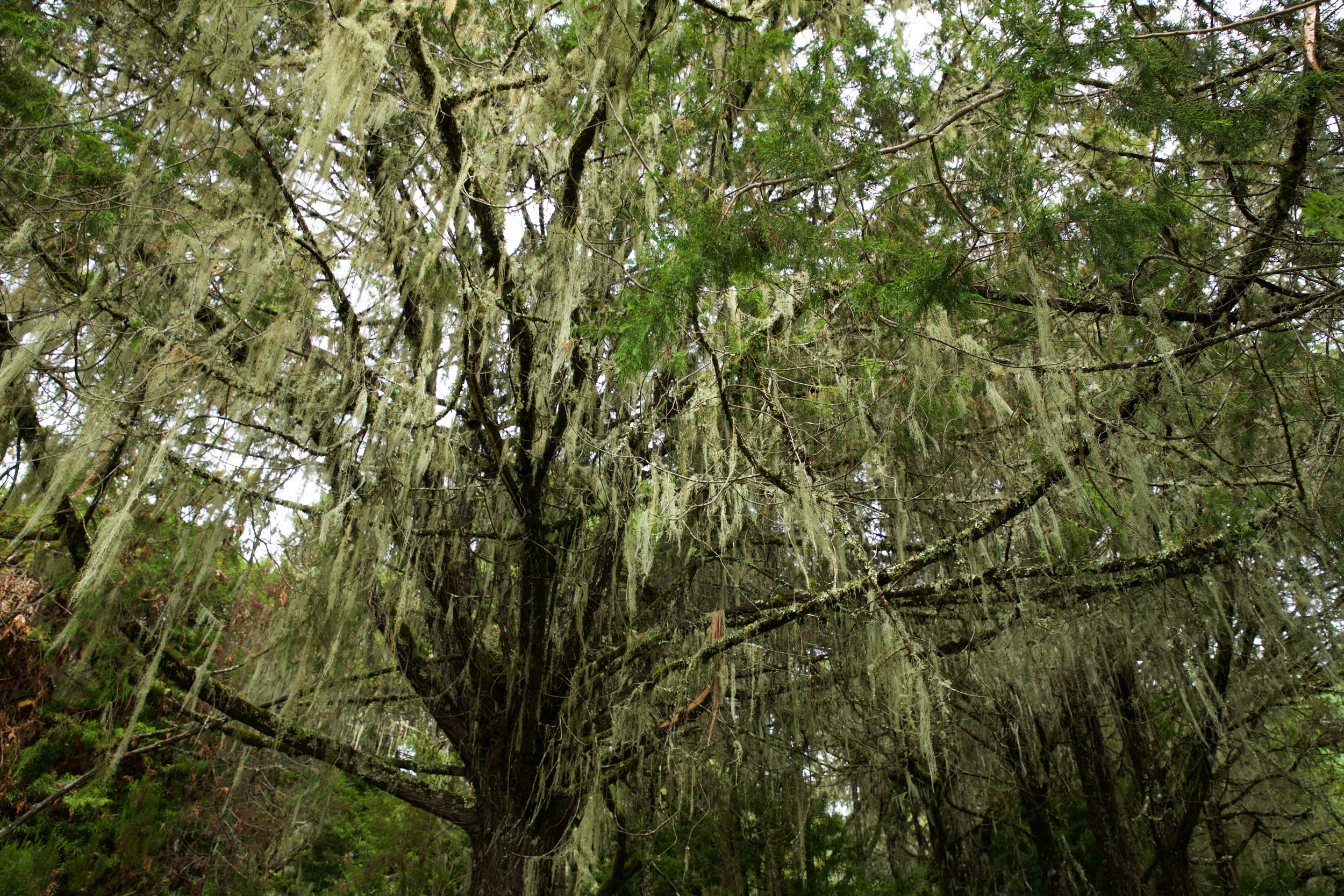
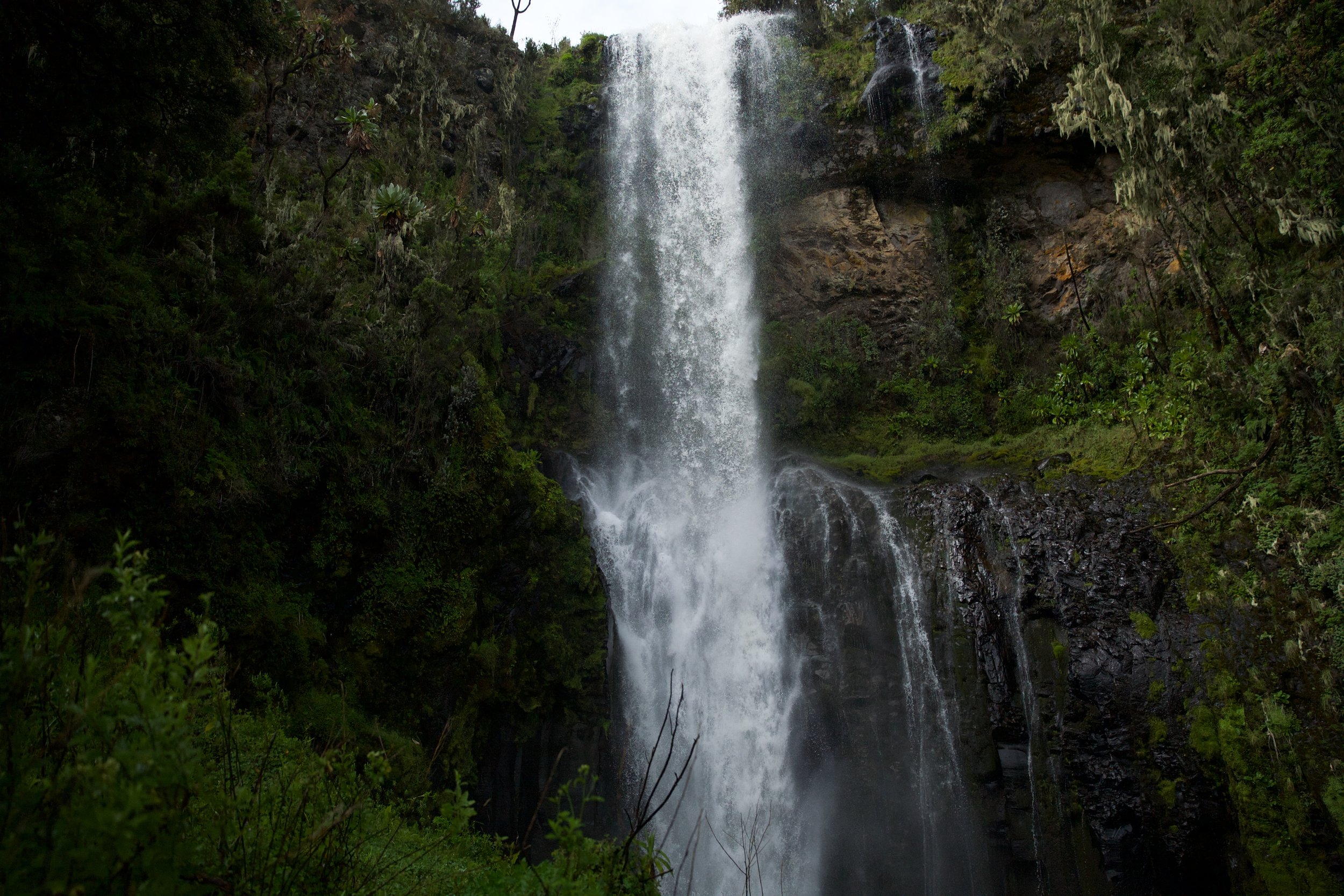
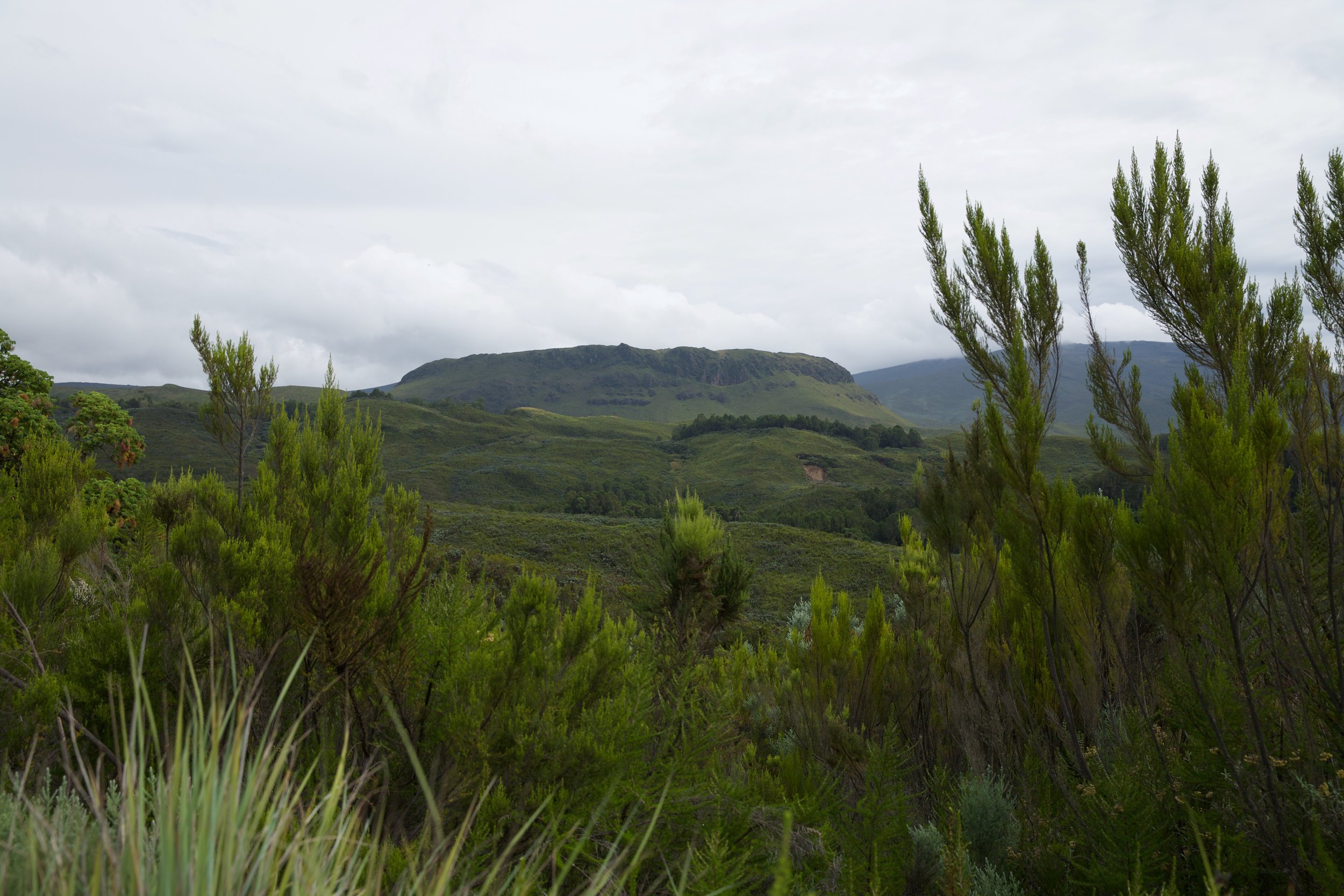
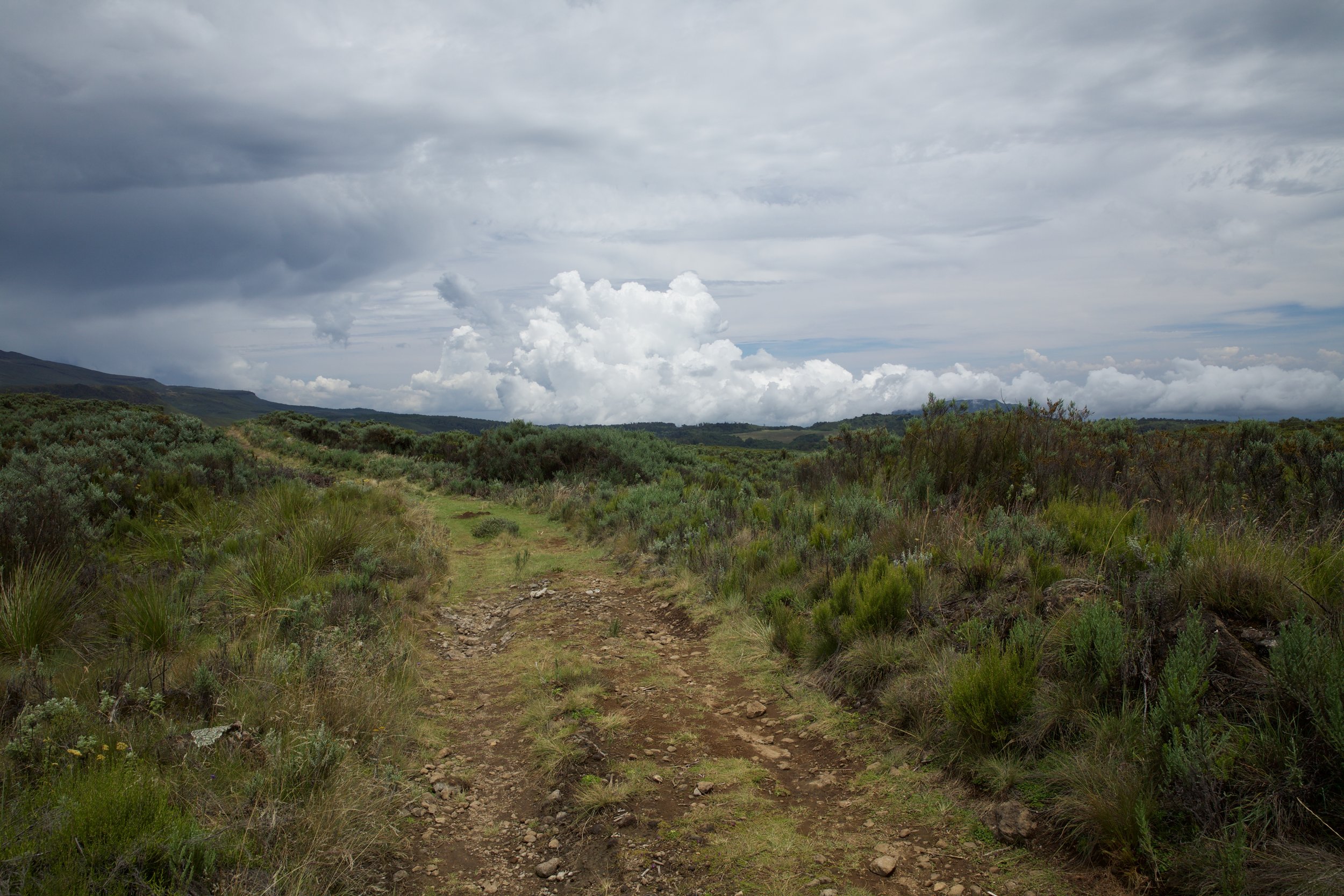
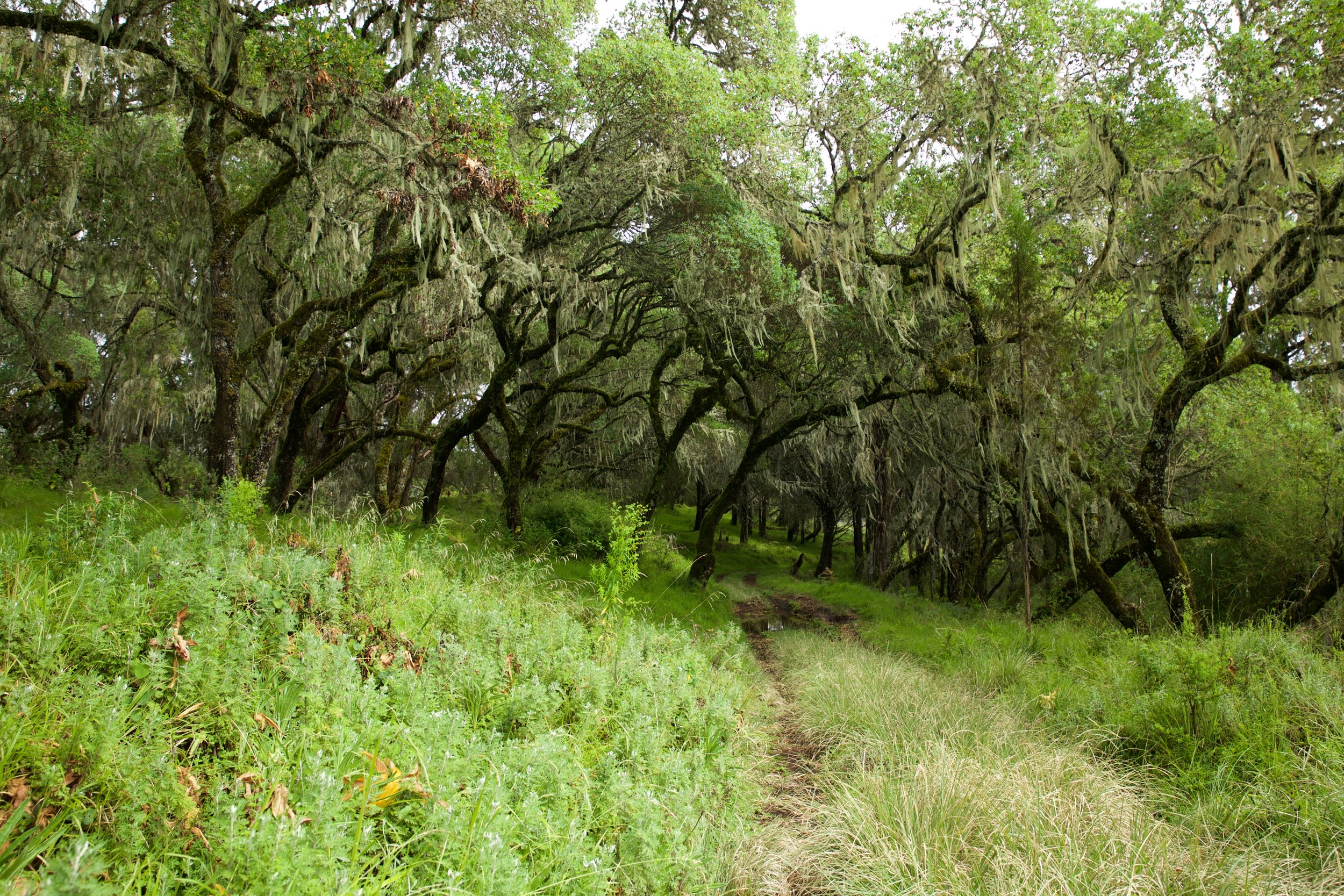
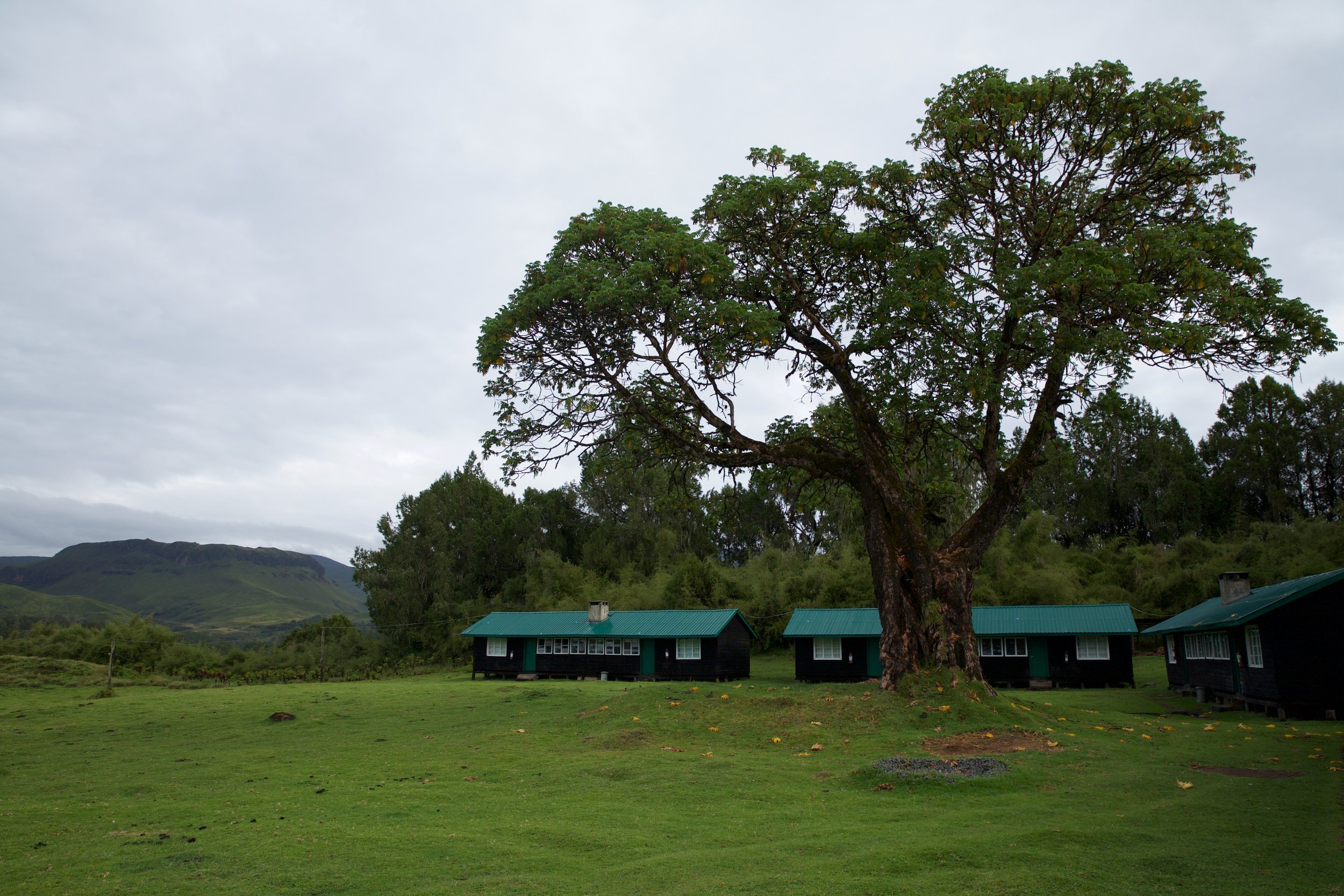
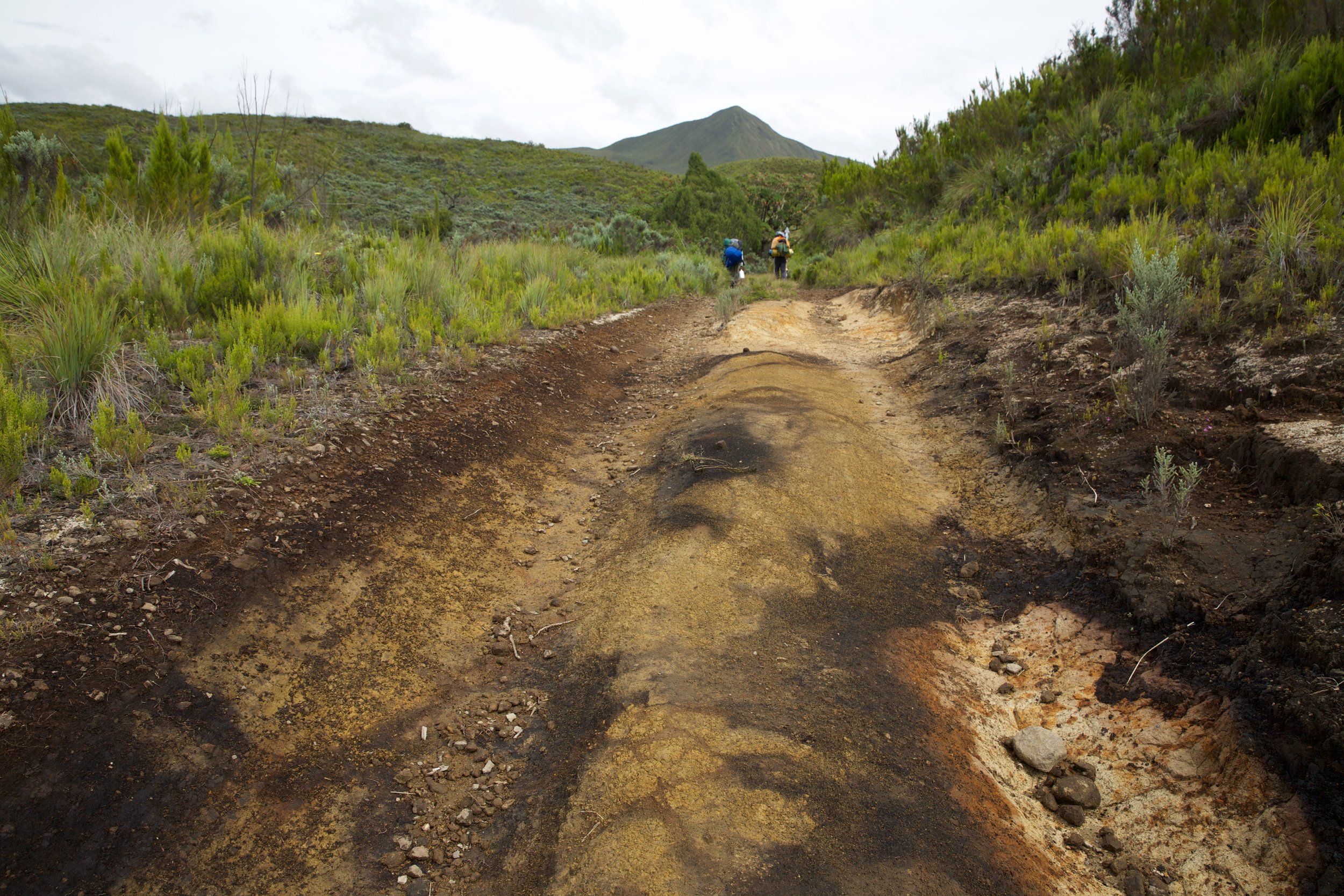
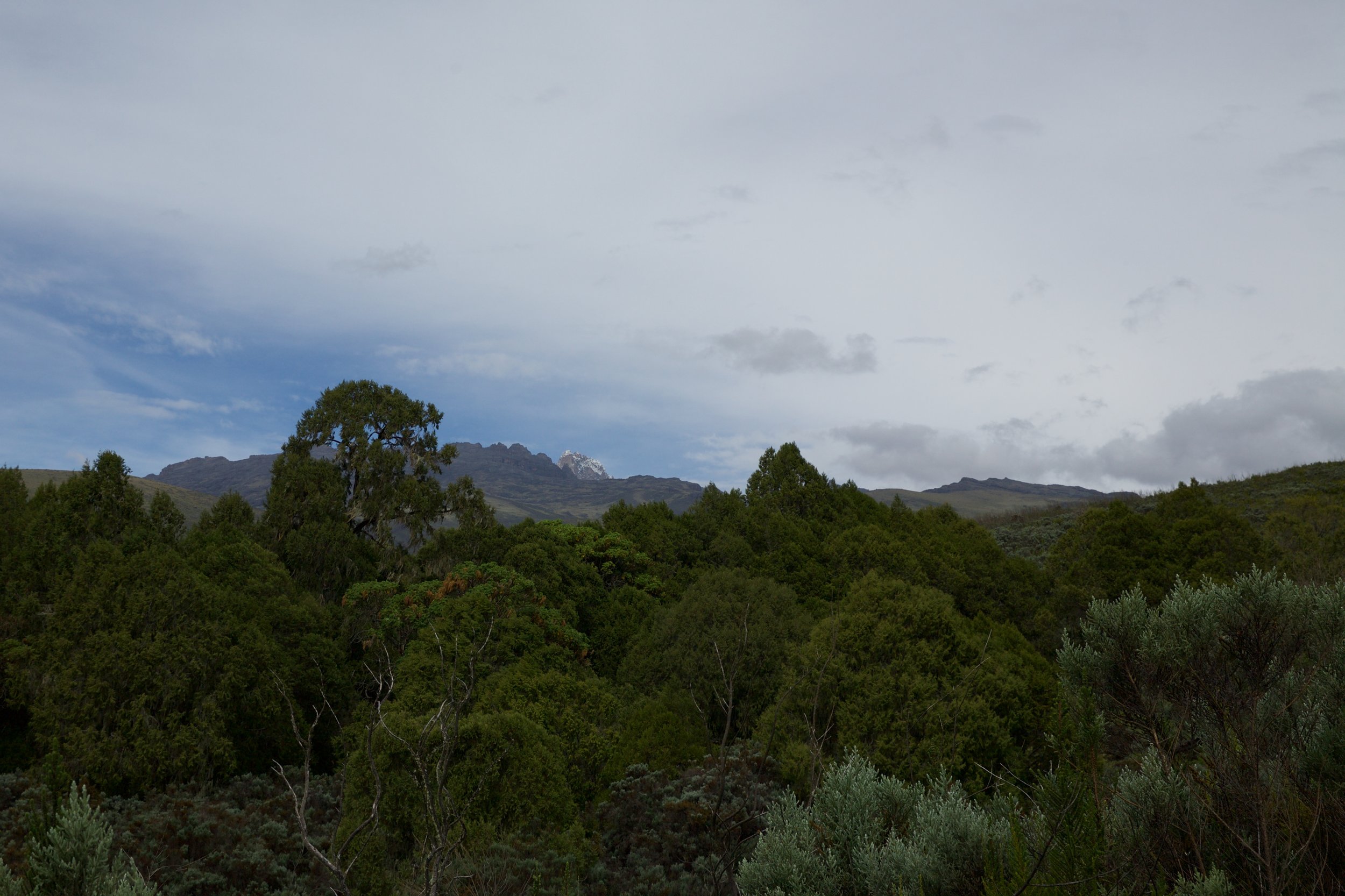
The first three days of walking were pleasantly moderate. Alas, Mount Kenya doesn't deliver her travails gradually; instead, she unleashes them all at once on summit night, when every step turns into a battle with patches of boggy moor, cascading volcanic rock, or icy outcrops. We camped at 4,300 meters in a valley pocked with lobelia the evening before our 1 A.M. ascent to Point Lenana. All routes to Mount Kenya's trekking summit are rated as scrambles; contrary to what a person—for instance, me—might reasonably assume, this does not mean that parts of the trail require hand-over-foot scrambling, but rather that the entirety of the route is hand-over-foot scrambling. Often, I would take three running steps up a steep slope, breathing laboriously in the thin air, only to slide back two strides. Freezing fog plagued the mountain and turned the bright beams of our headlamps to dim orbs. A thin film of ice crystals coated the plastic poncho I donned in lieu of a Ben-and-Joshua-mandated Gore-Tex jacket. The cold was profound, paralyzing. I could sense the open space around us rather than see it.
Half an hour before Point Lenana, the main routes up the mountain begin to converge. Fifteen minutes below the top, the trail narrows into a short but formidable series of fixed chains and frigid metal ladders punctuated by two- and three-meter spurts of borderline-technical climbing. I was exhausted, shaky with nerves, when I pulled my body over the final ladder onto the summit. I had removed my clumsy mountaineering gloves for fear of losing my grip on the icy rungs; my fingers burned like dry kindling and were just as stiff. We'd climbed above the cloud line, the fog mercifully behind us. A pale sun rose, suffusing the mountain with watery light and laying bare the rocky sweep of valley below. It was heady and ethereal and very, very cold.
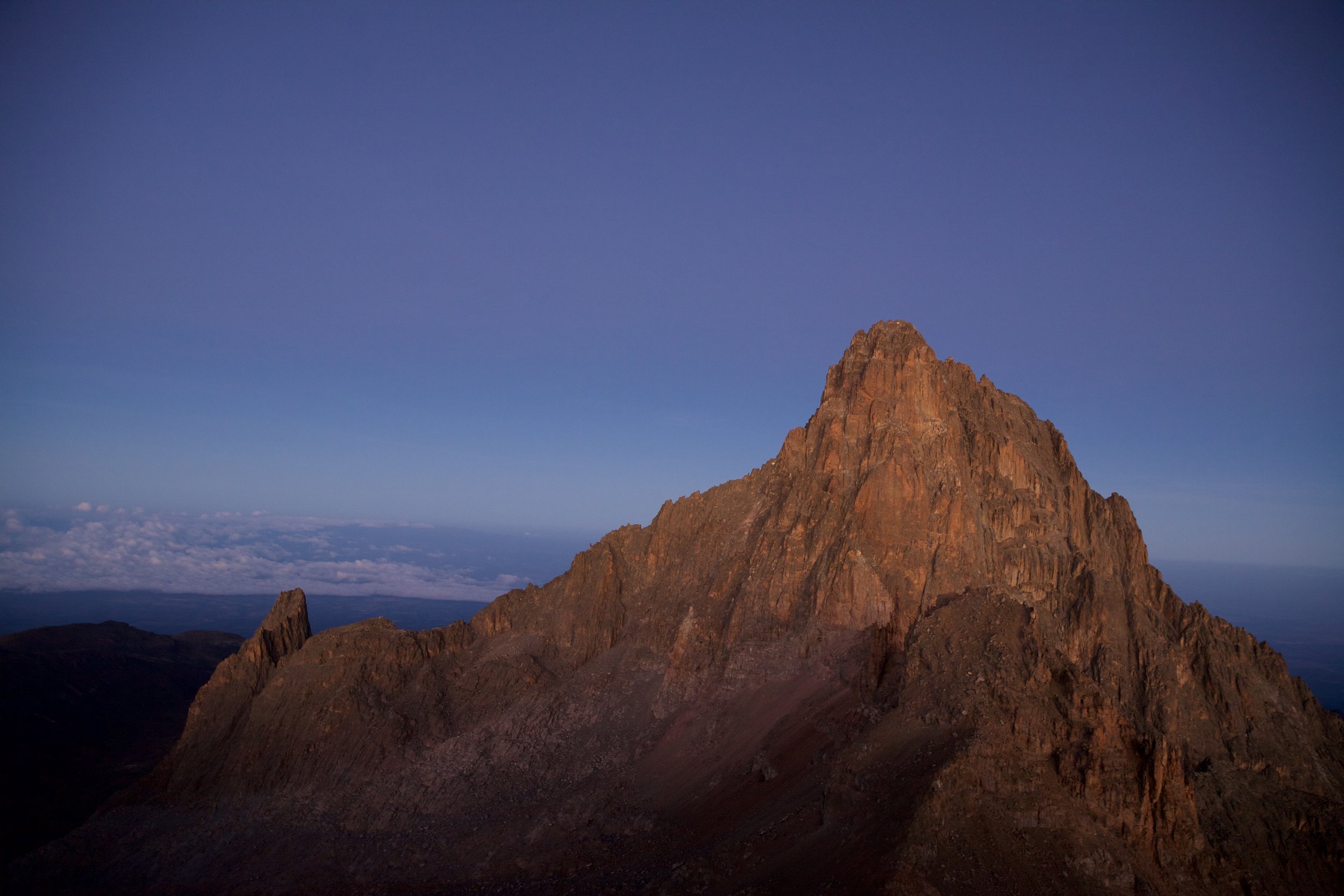
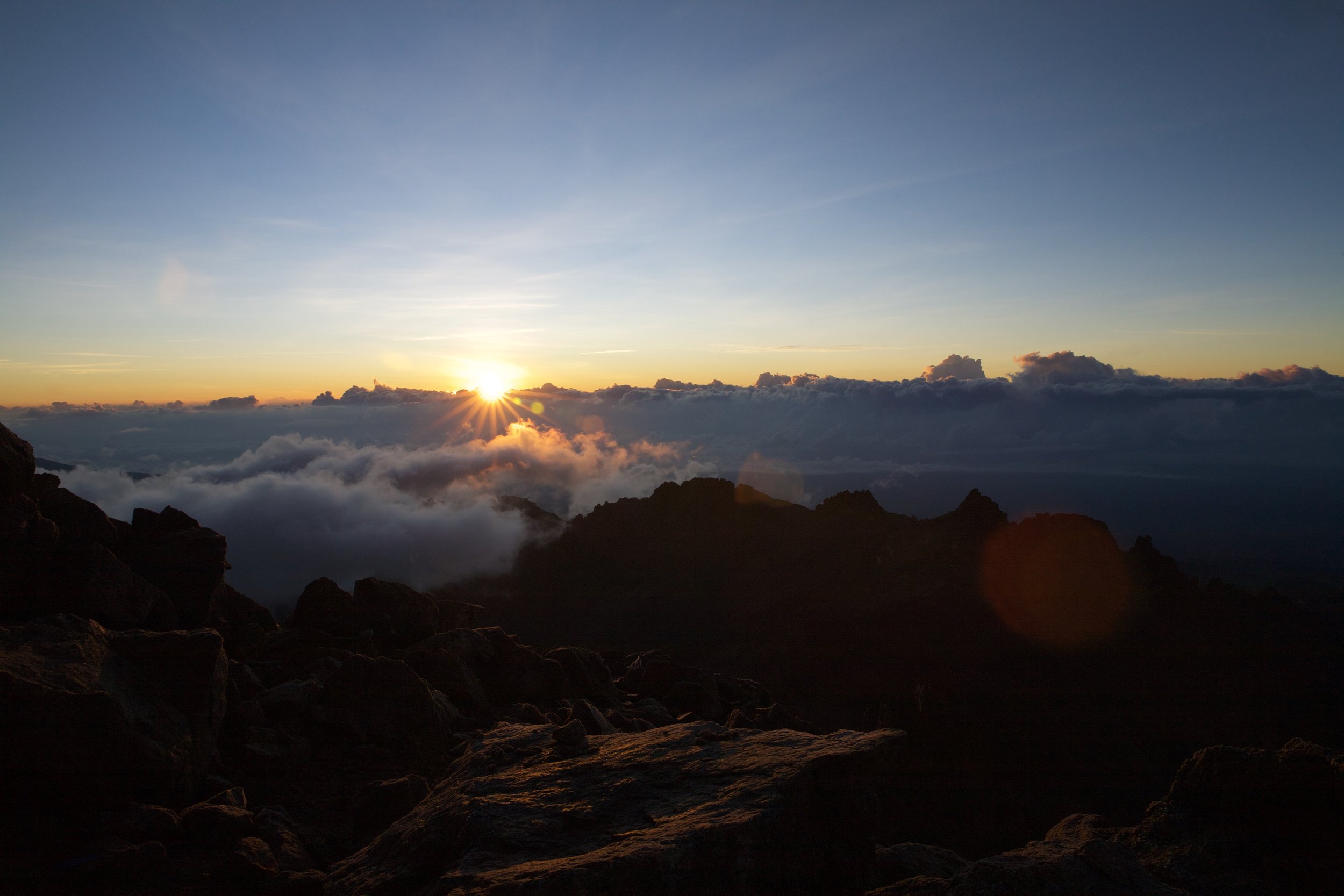

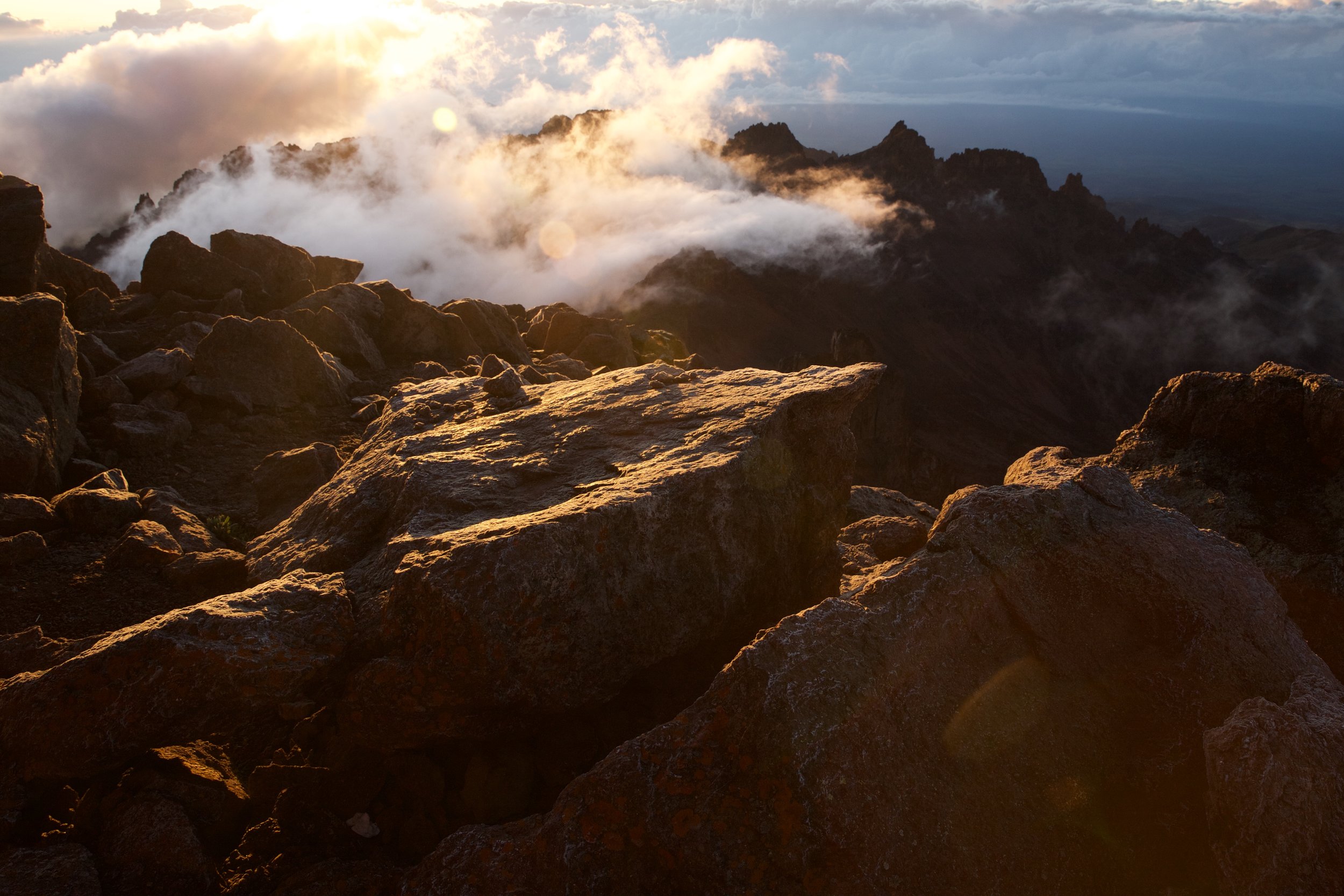
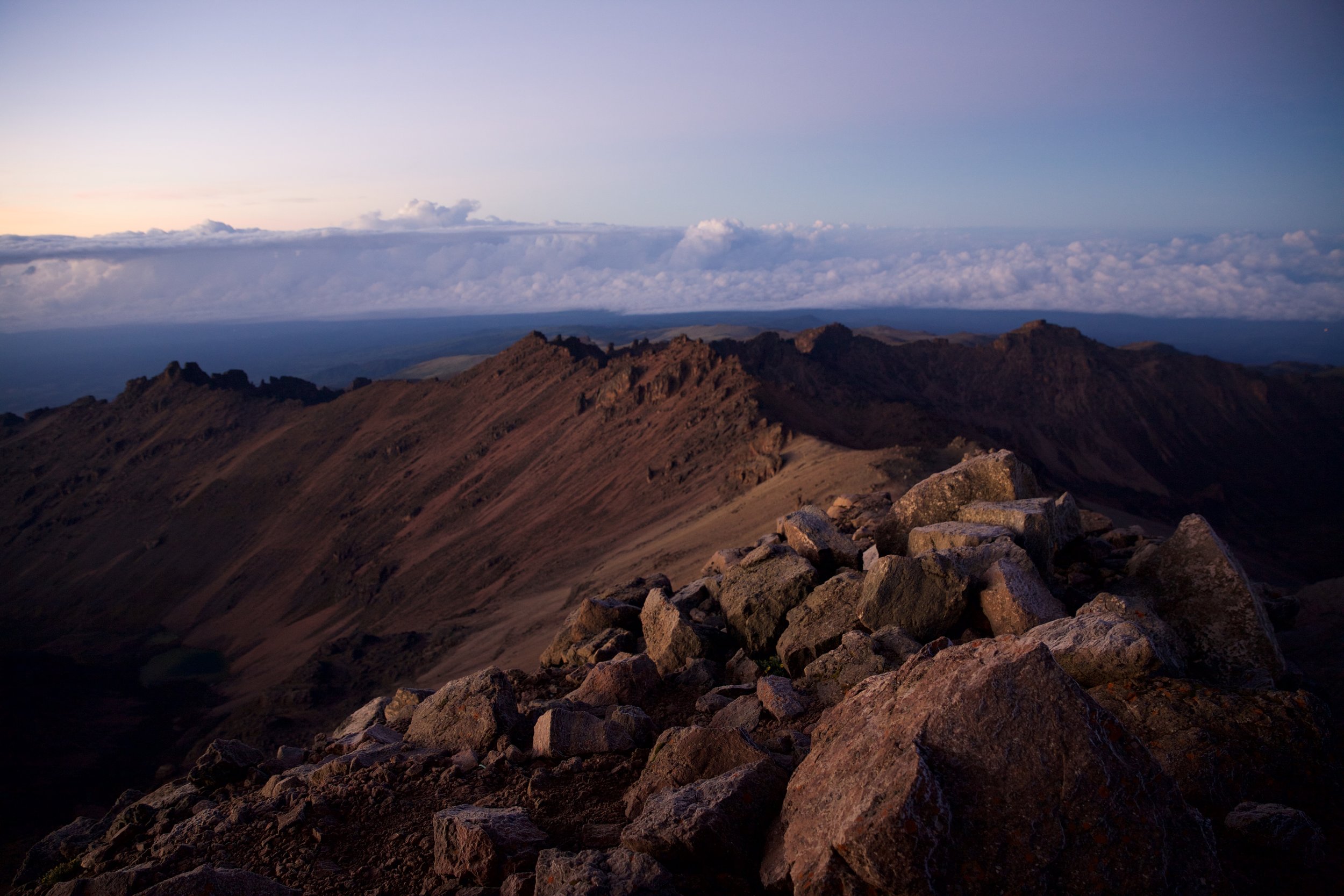
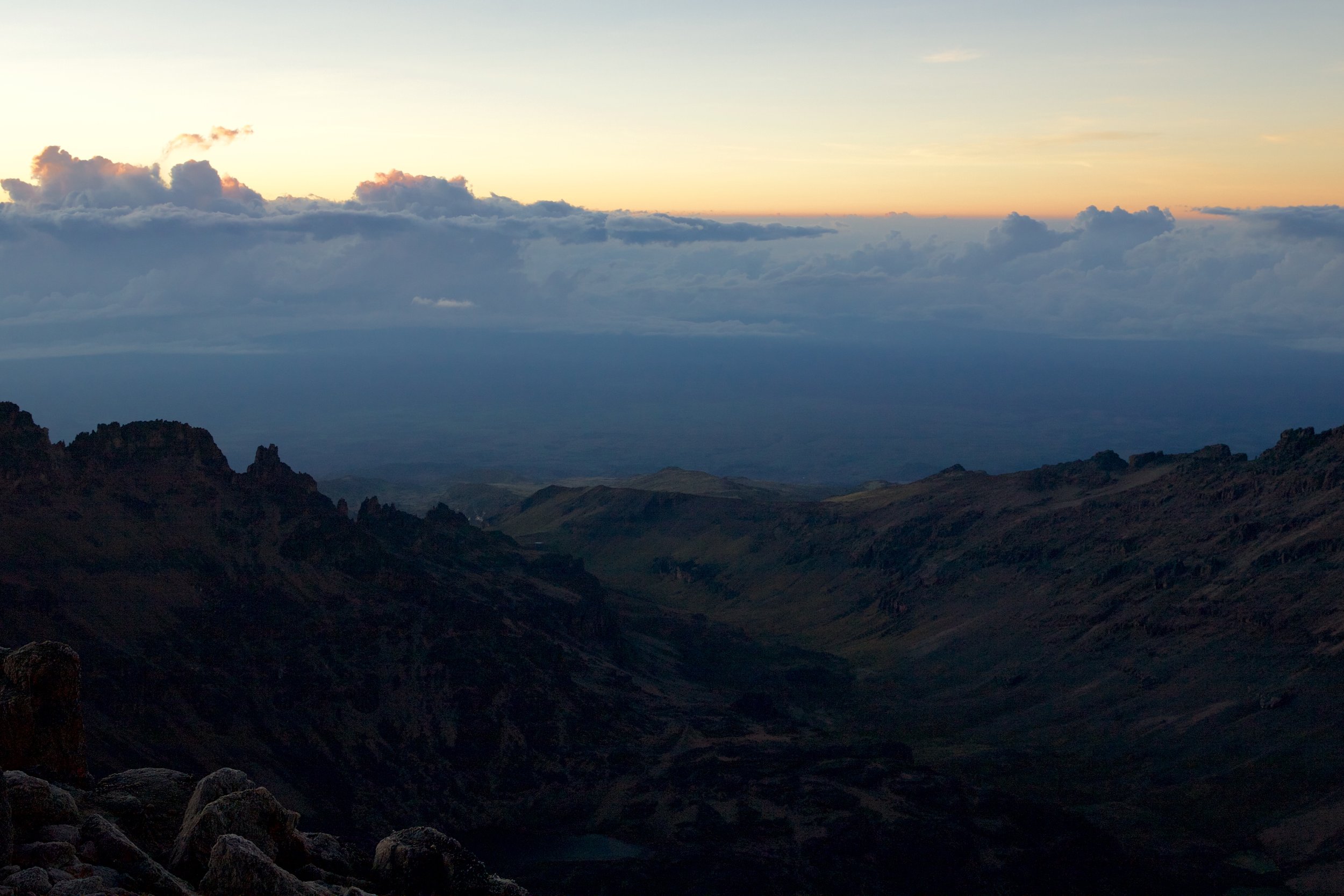
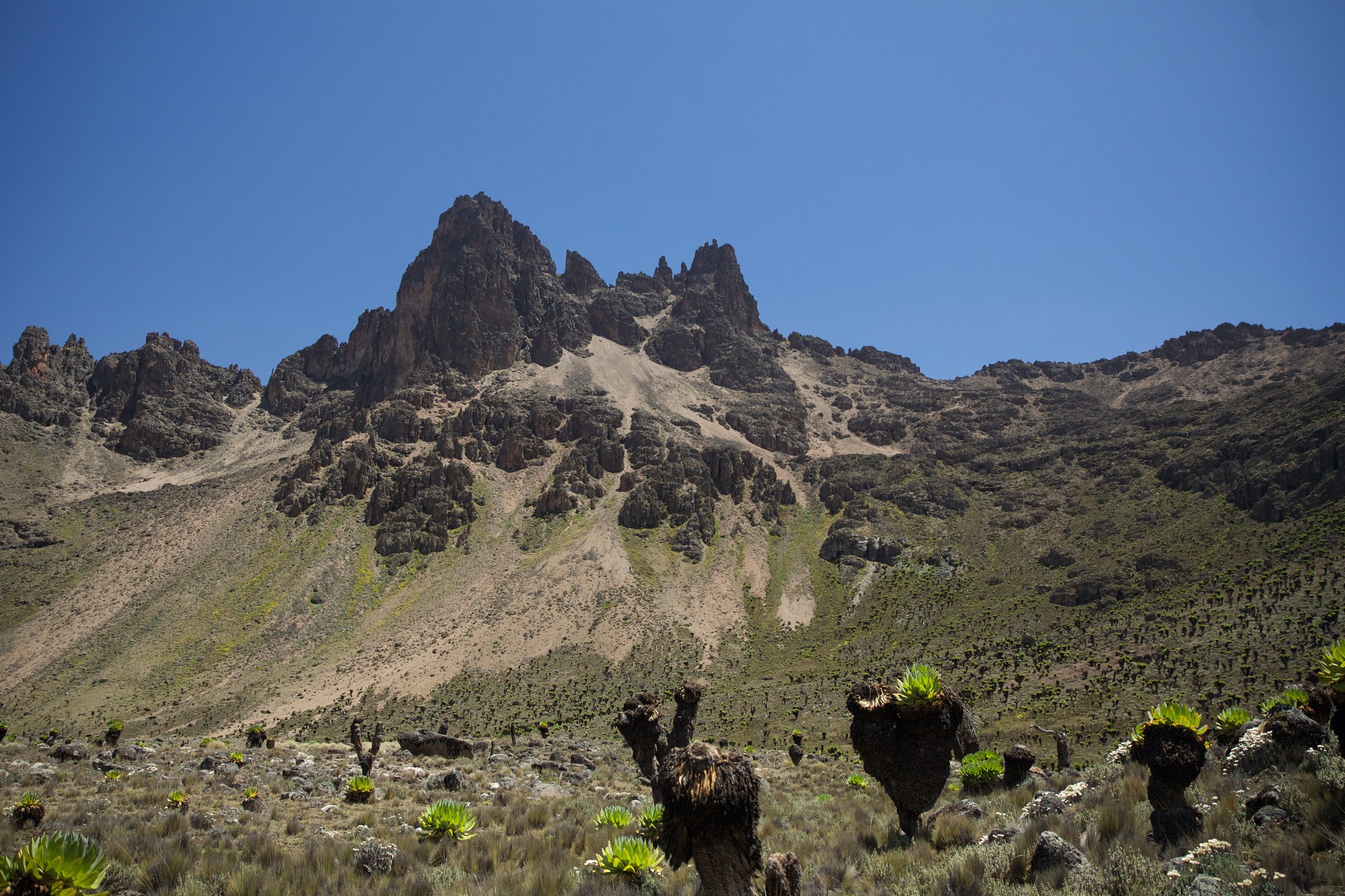
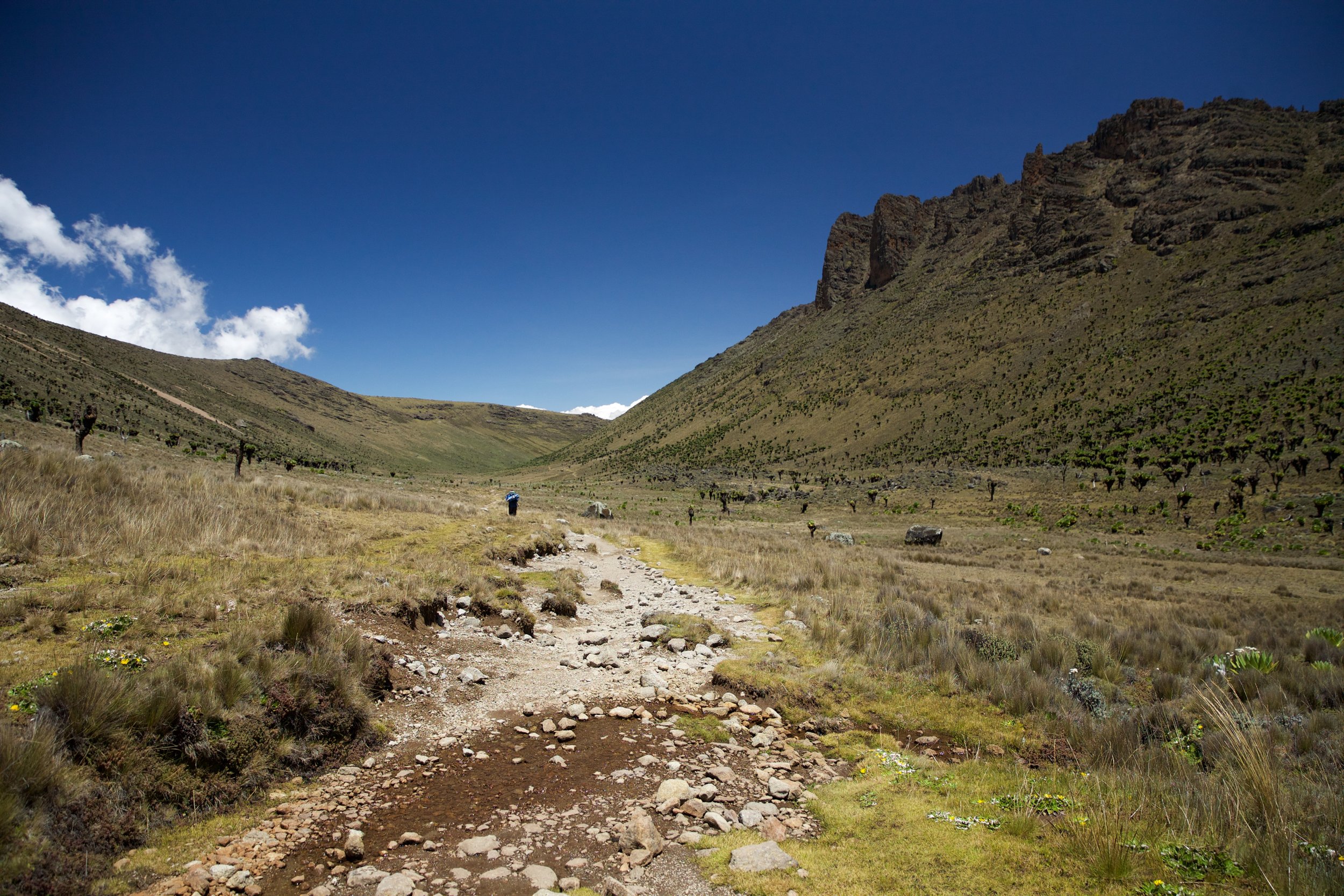

I spent more of the powdery descent on my backside than upright, scree whipping at my hiking pants and opening tiny cuts on my hands. After a fortifying breakfast of sorghum porridge and sliced cassava root, we traversed a shallow basin filled with outlandish plants and the darting of an occasional hyrax. Joshua pointed out a hill he claims is named after him; later, he advised me on how best to escape charging buffalo (lie flat on the ground) and elephants (strip naked and throw your clothes into the brush). I must have looked skeptical, because he threw his head back and guffawed, whistling through his crooked teeth. You first, I said. He walked ahead, smiling.
The sunlight had mellowed when we arrived at the bunkhouse. I was so worn out that I was holding back irrational tears, desperate for a good night's rest. I collapsed, utterly spent, on a thin mattress laid over rough wooden slats. Before I fell asleep, I thought of Joshua all those years ago, on this same square of wild earth, alone with a pile of mattresses and a machete. That night I dreamt of elephants.

